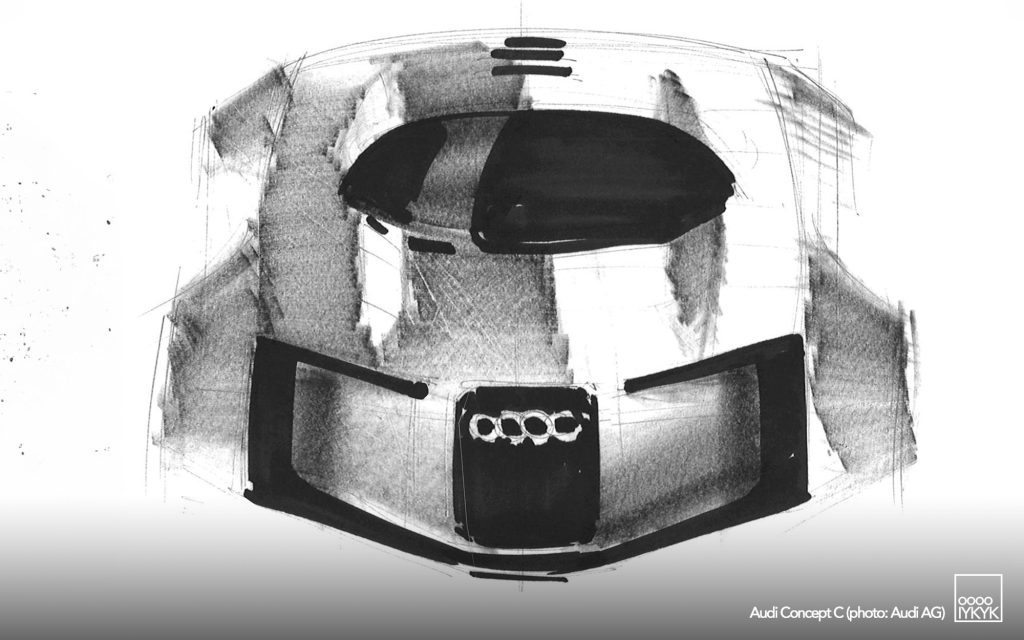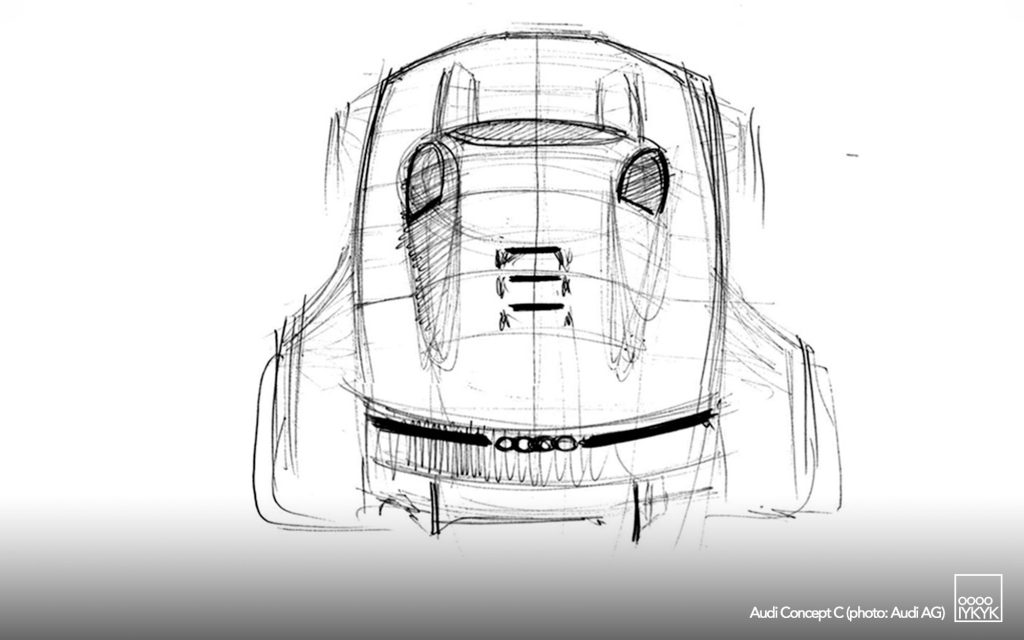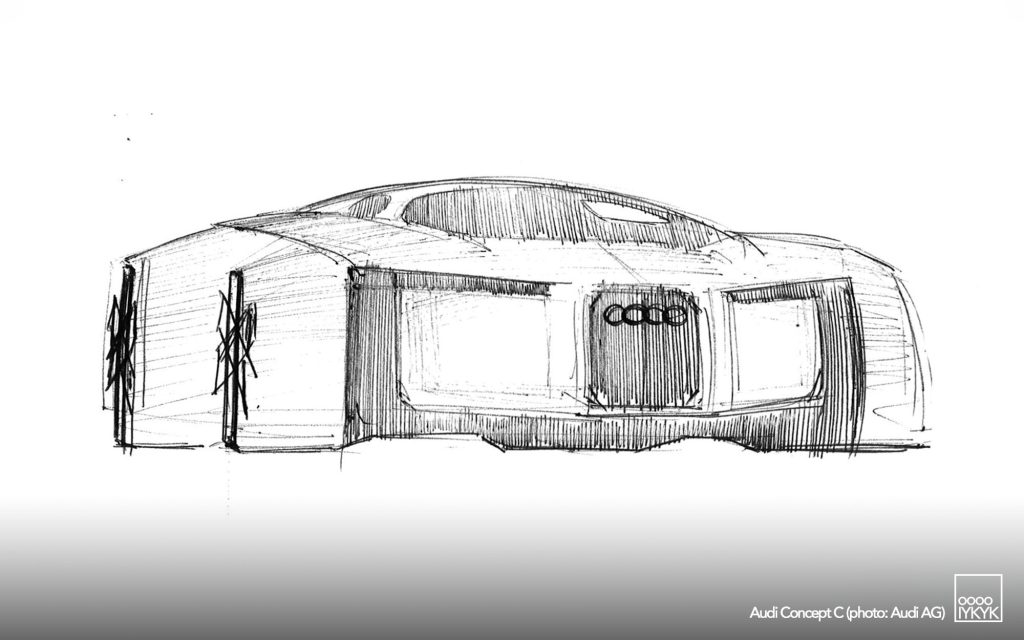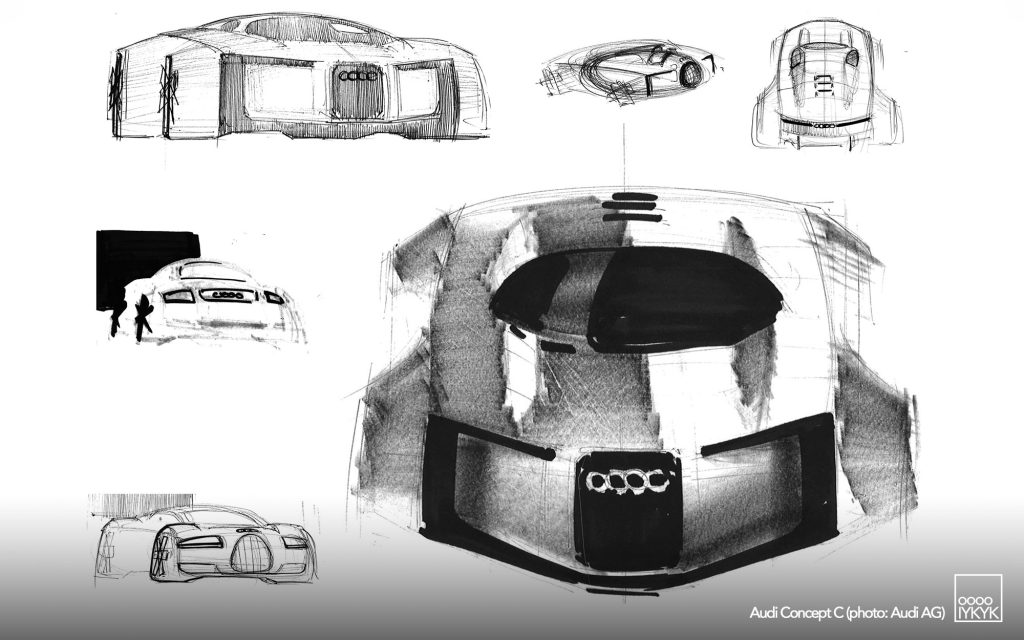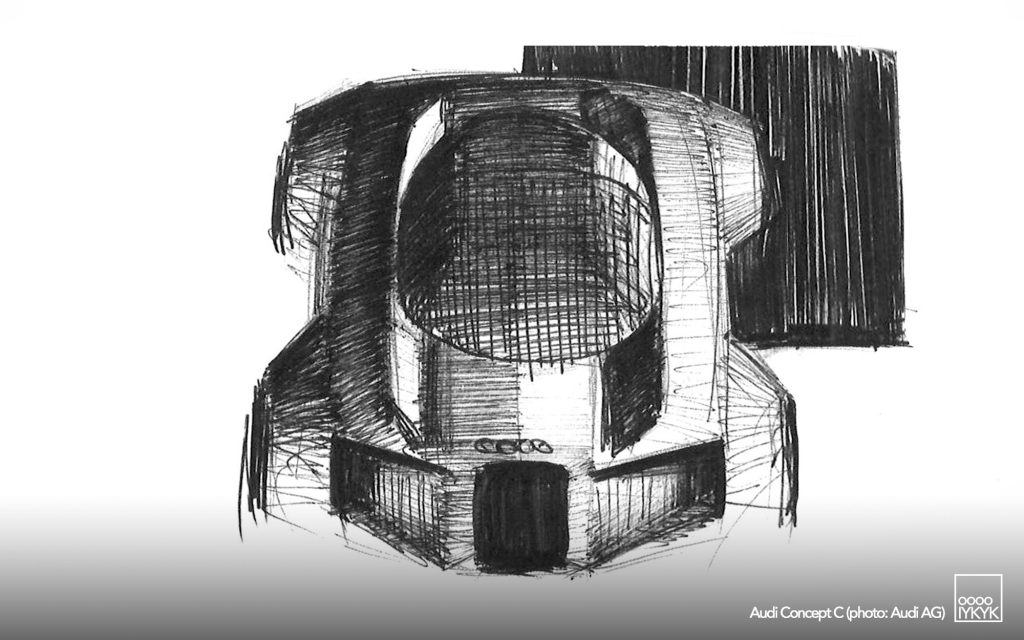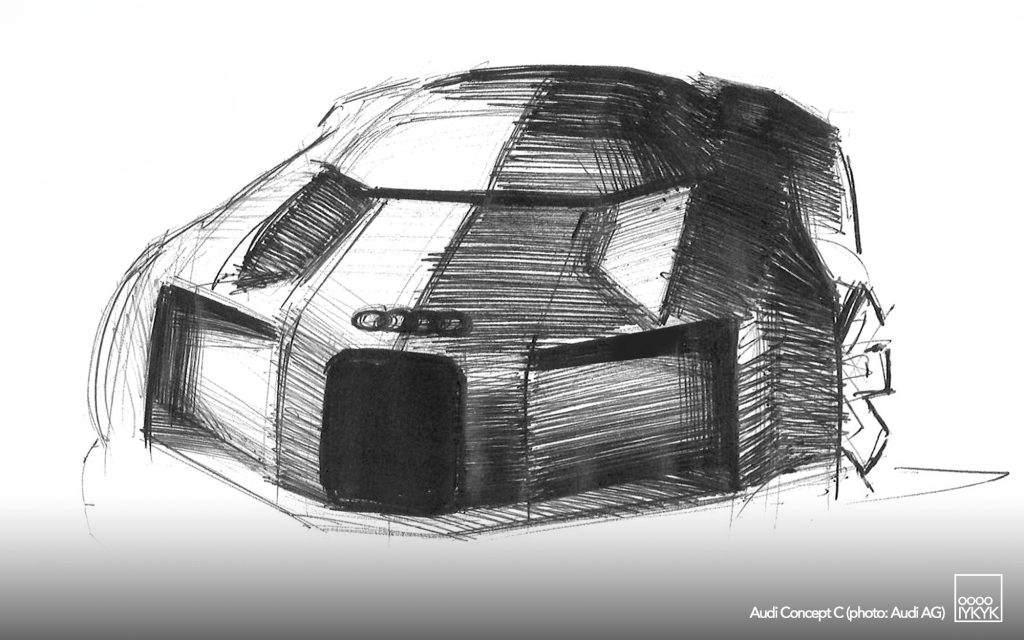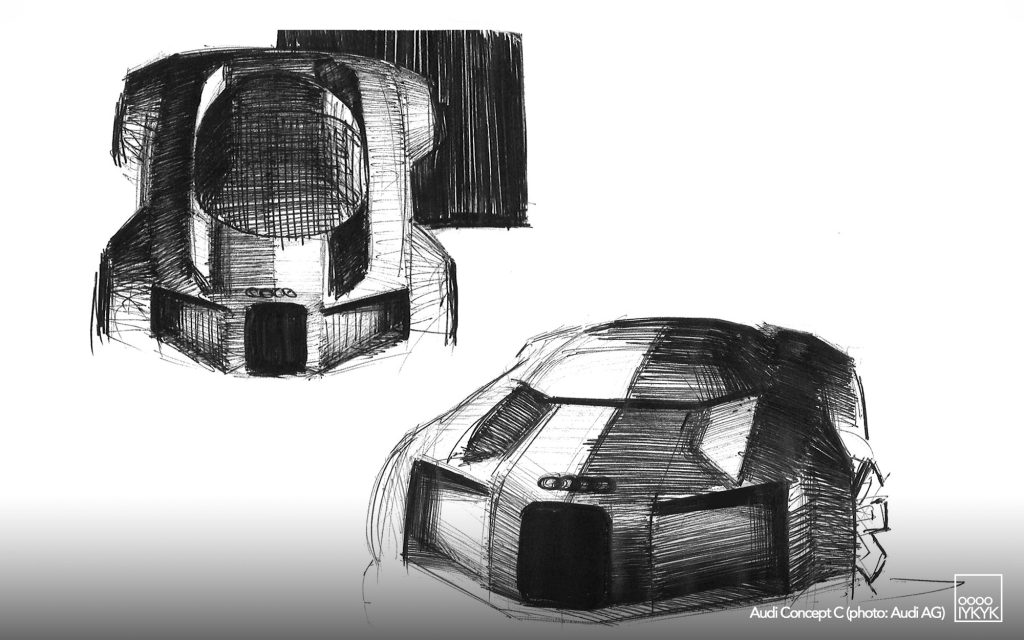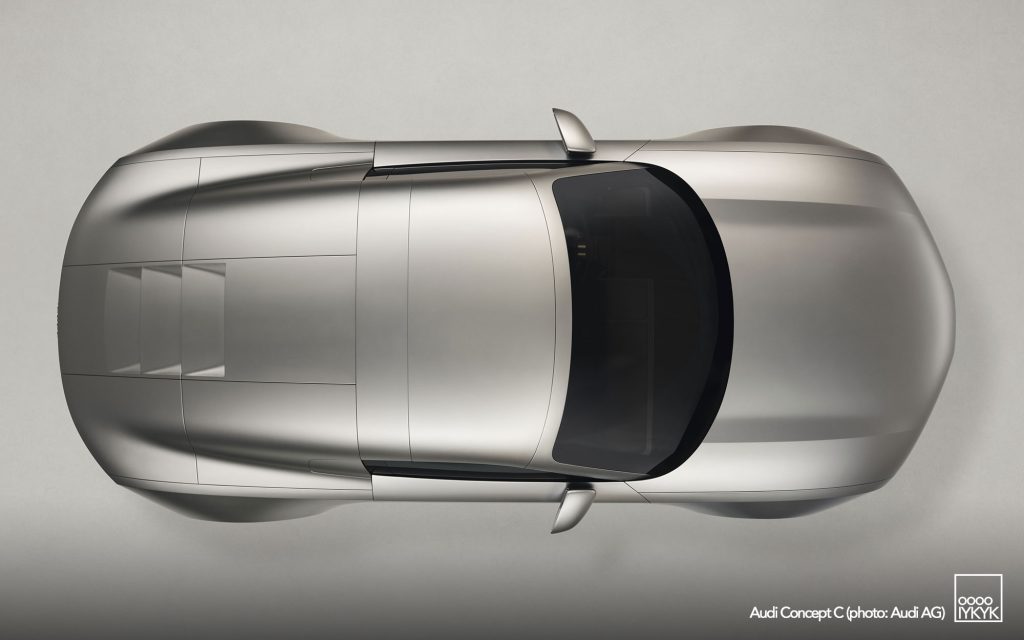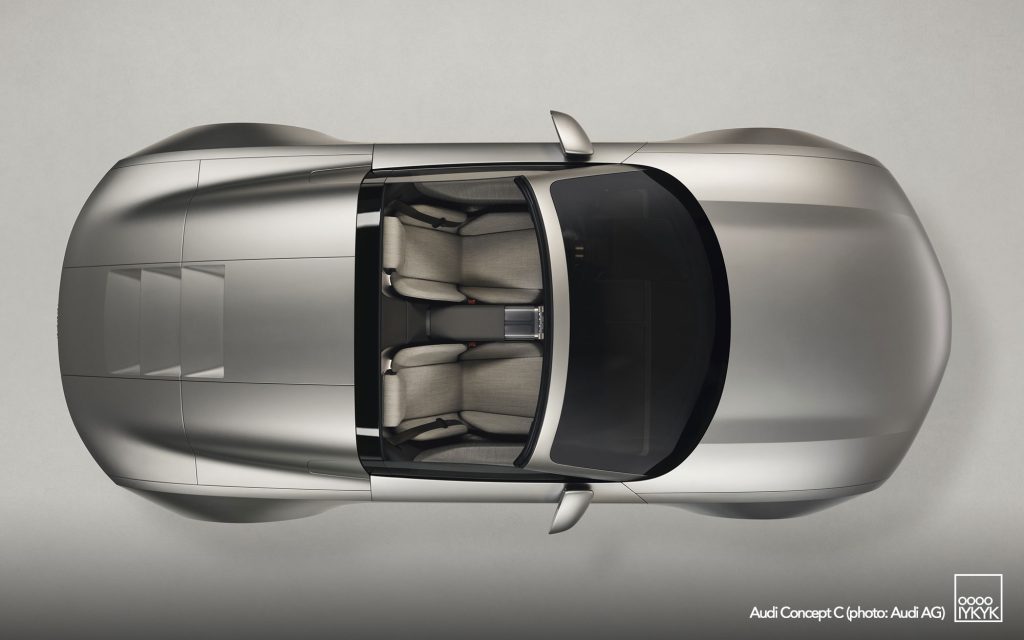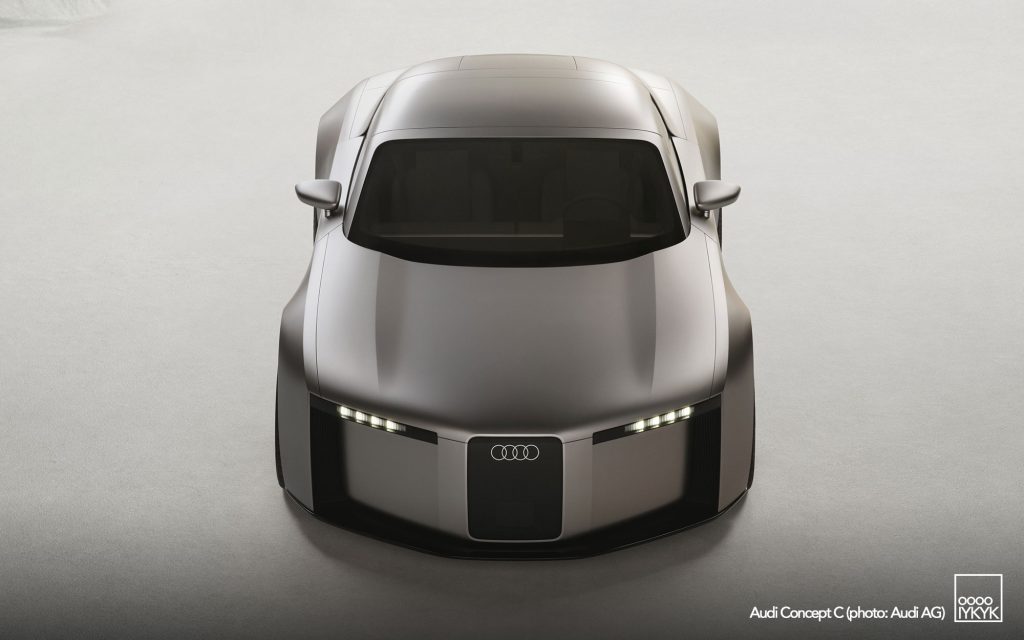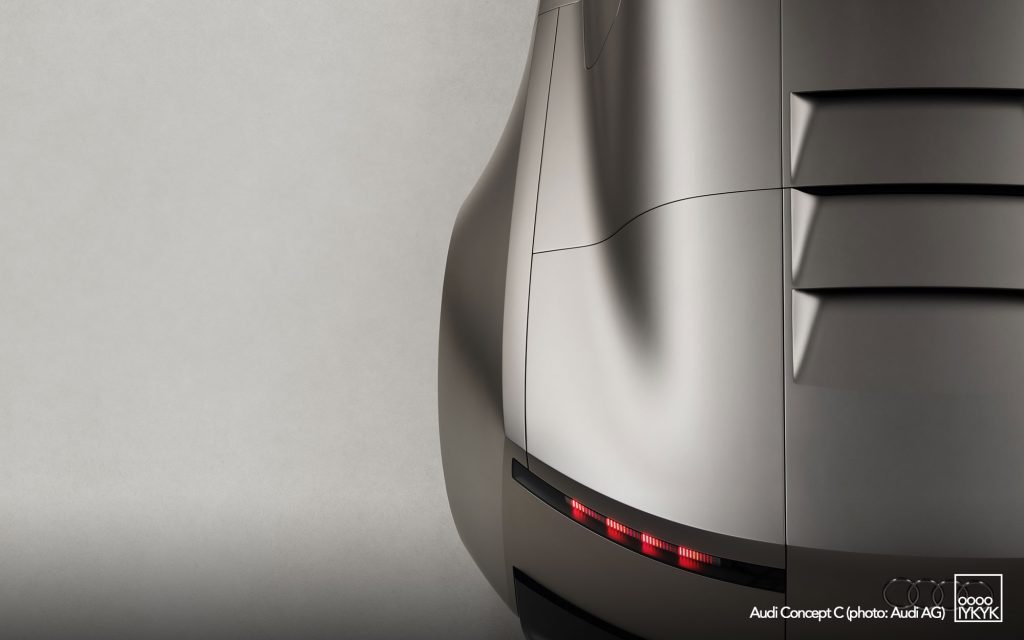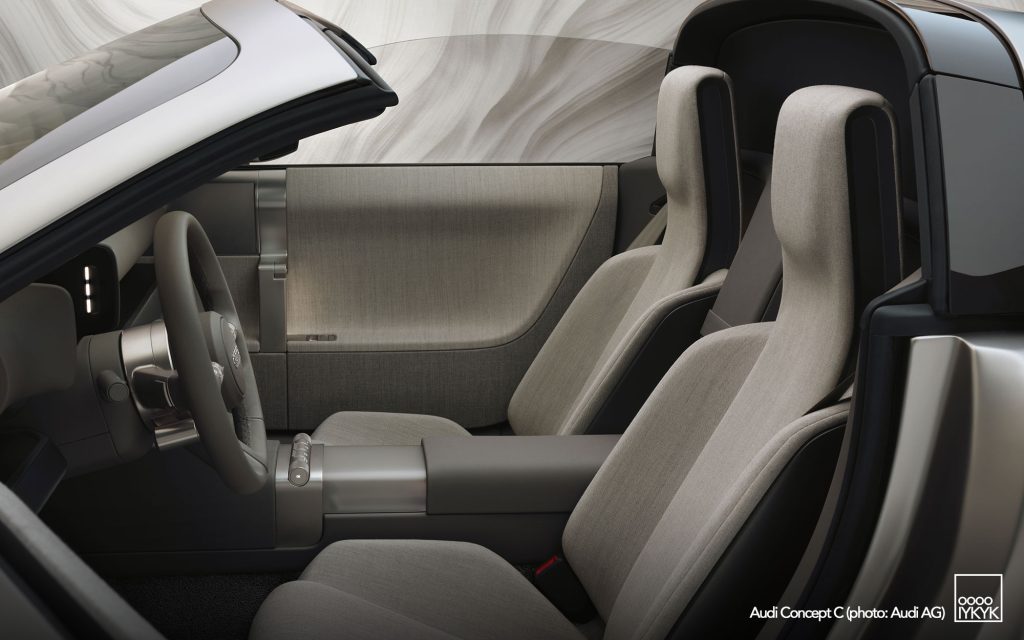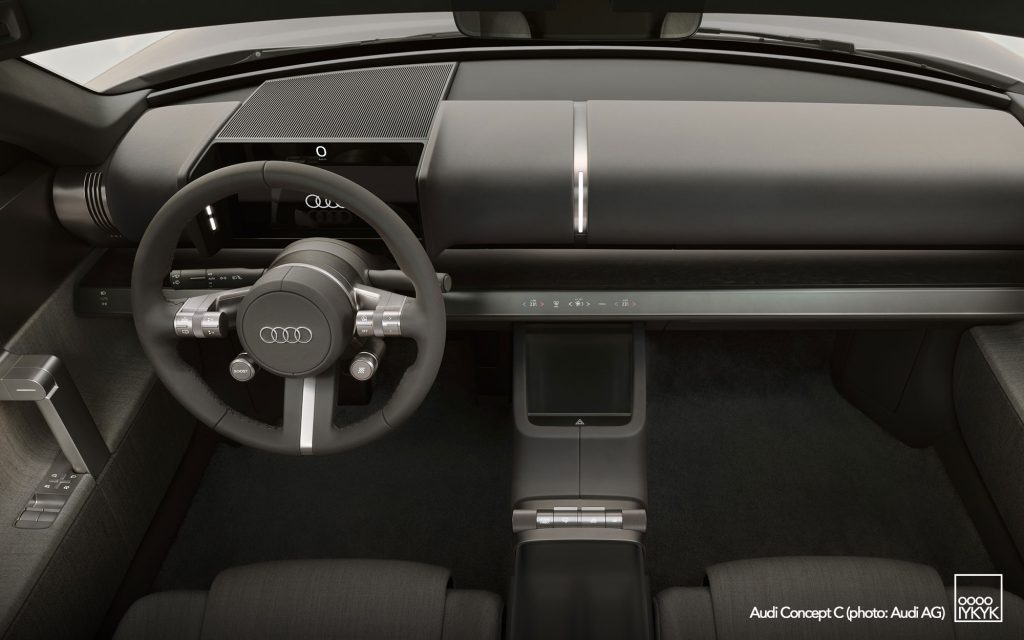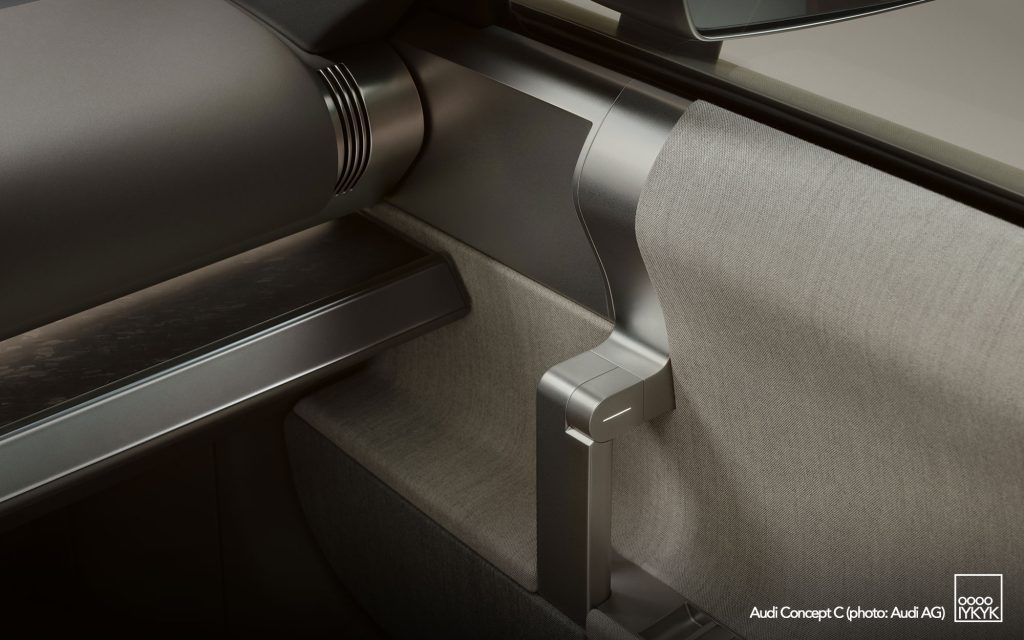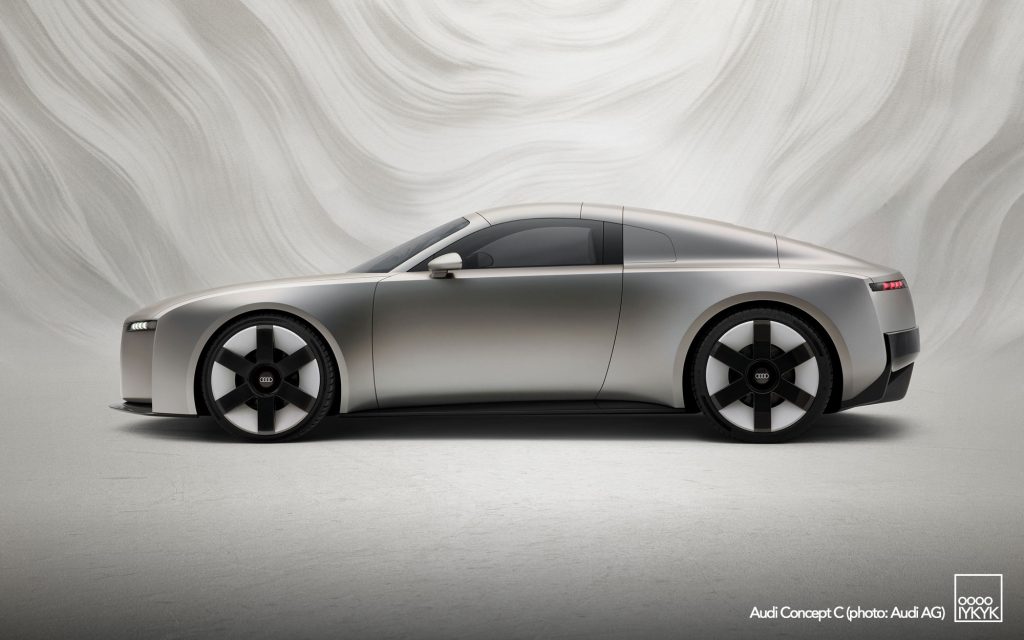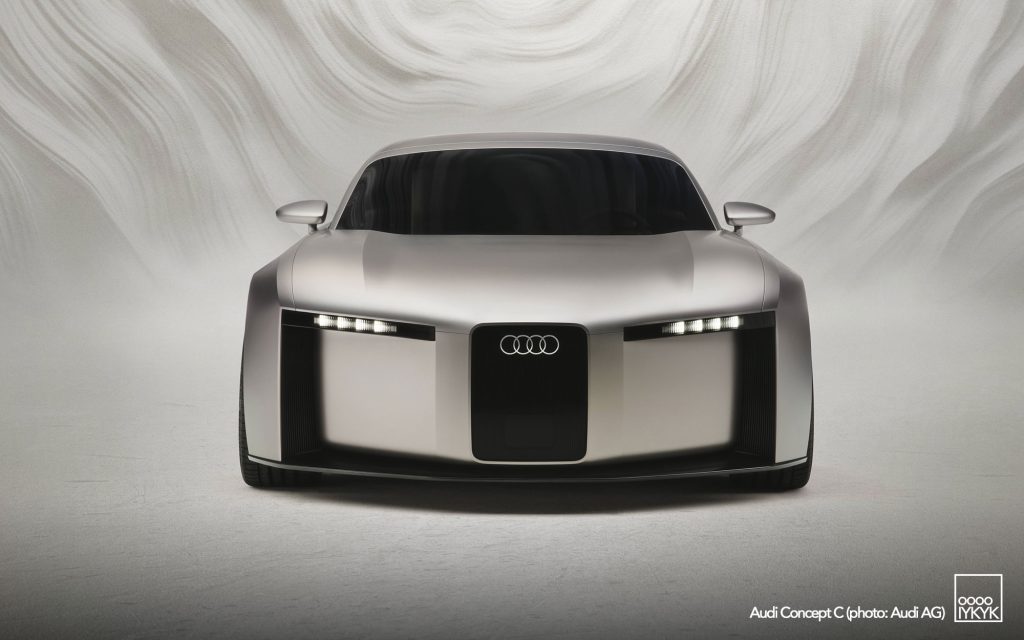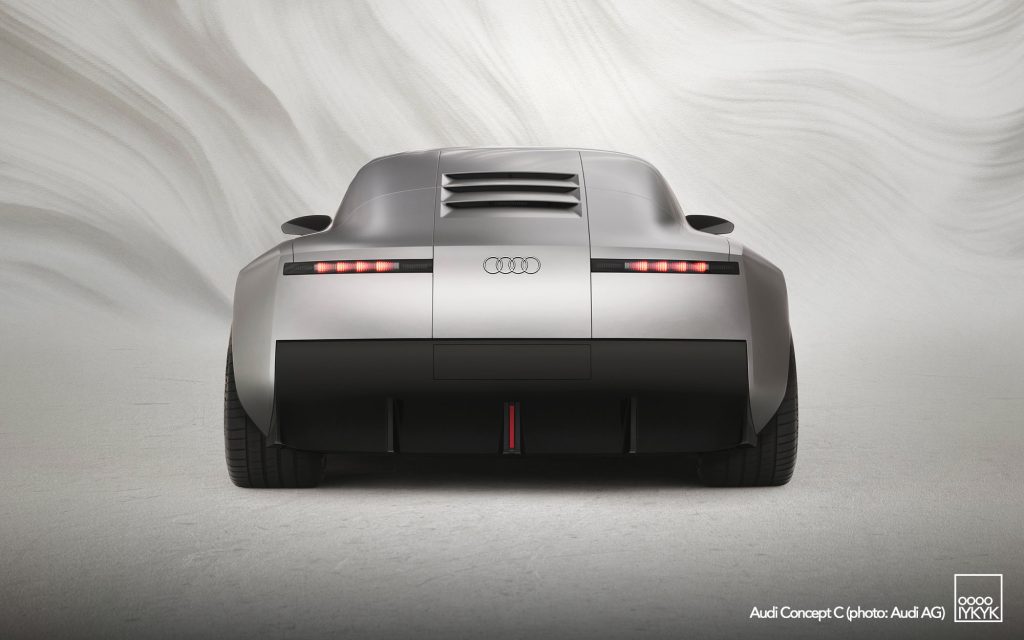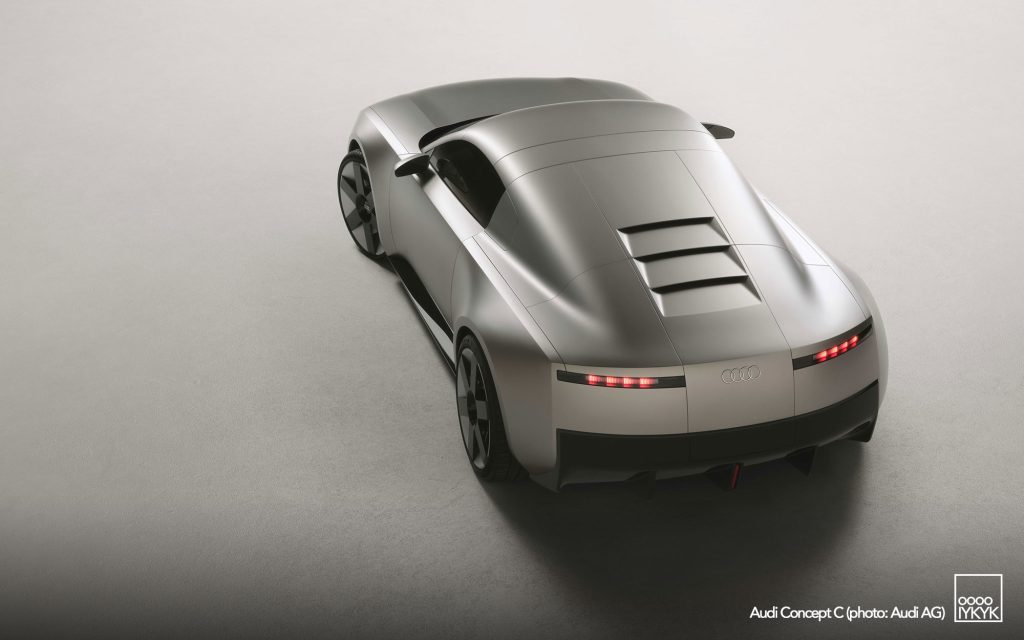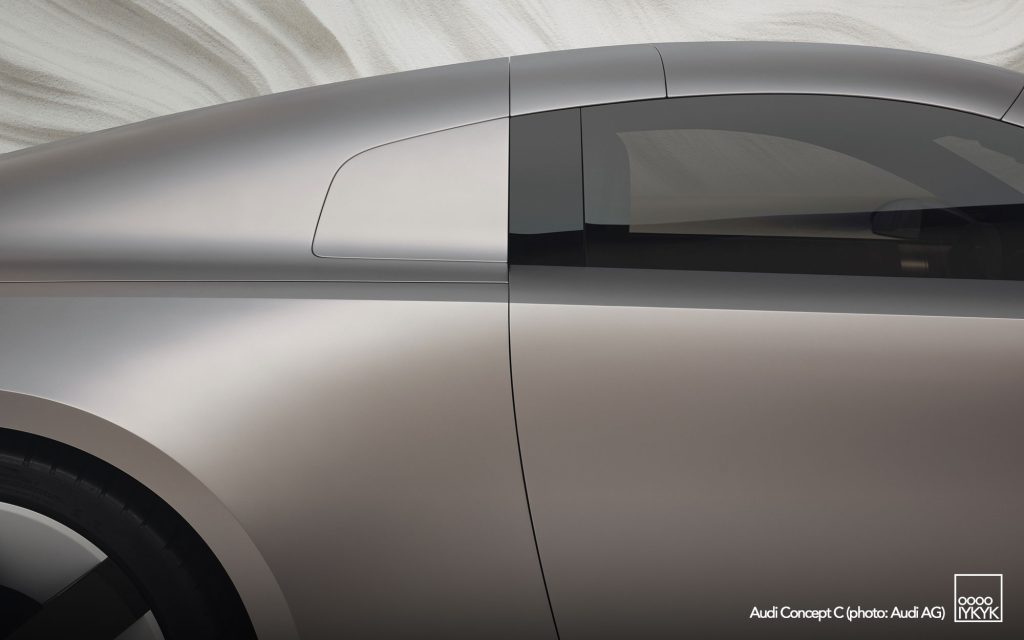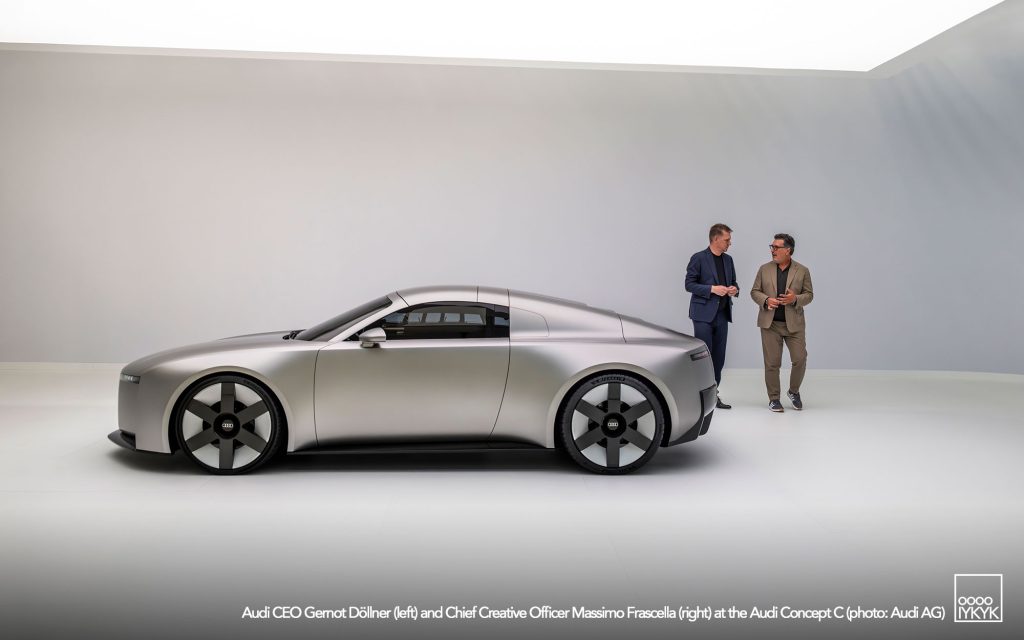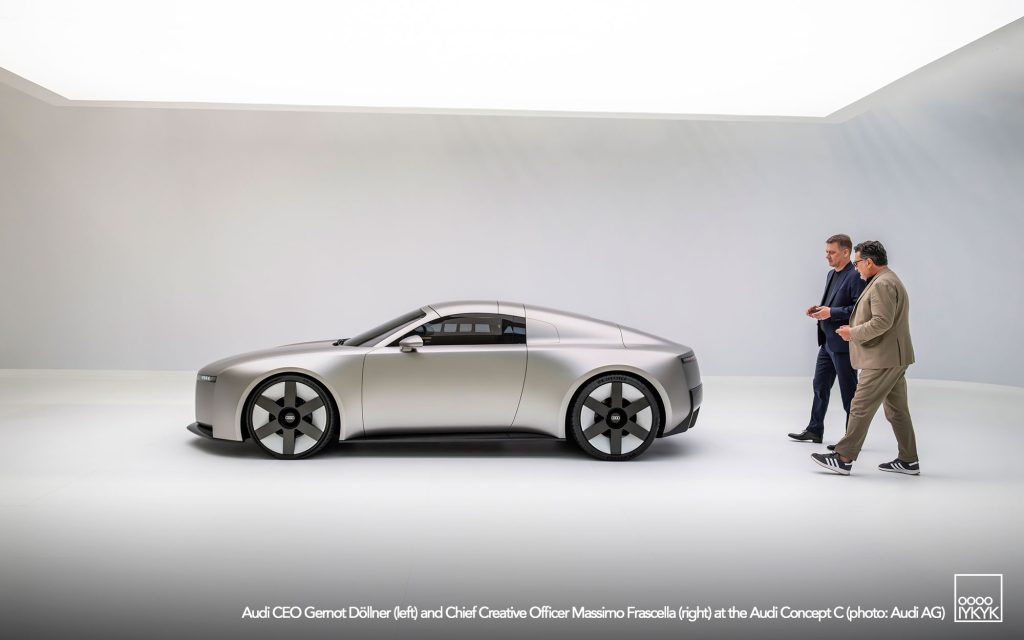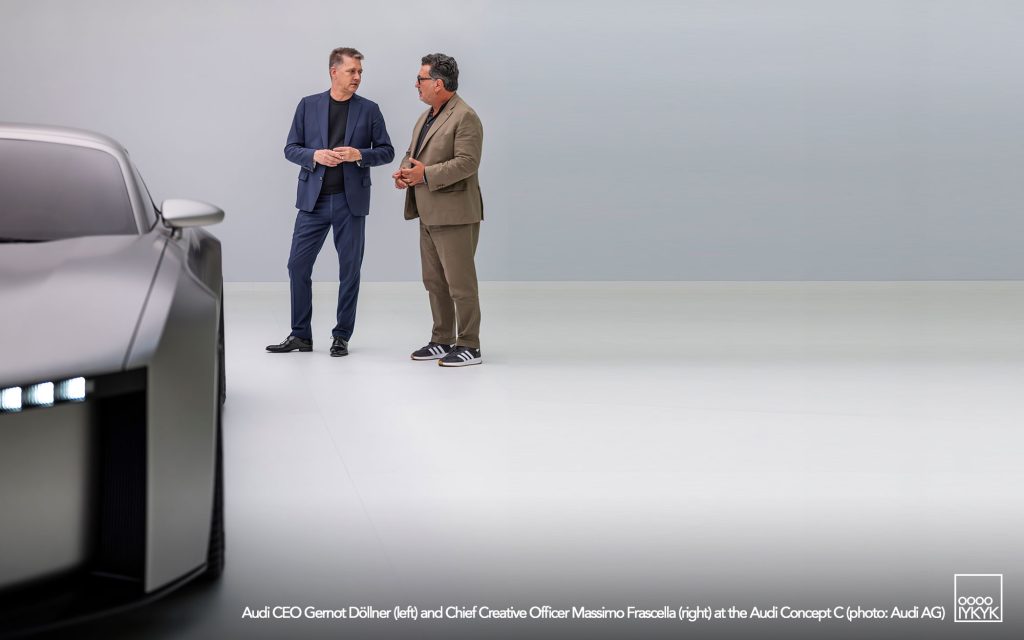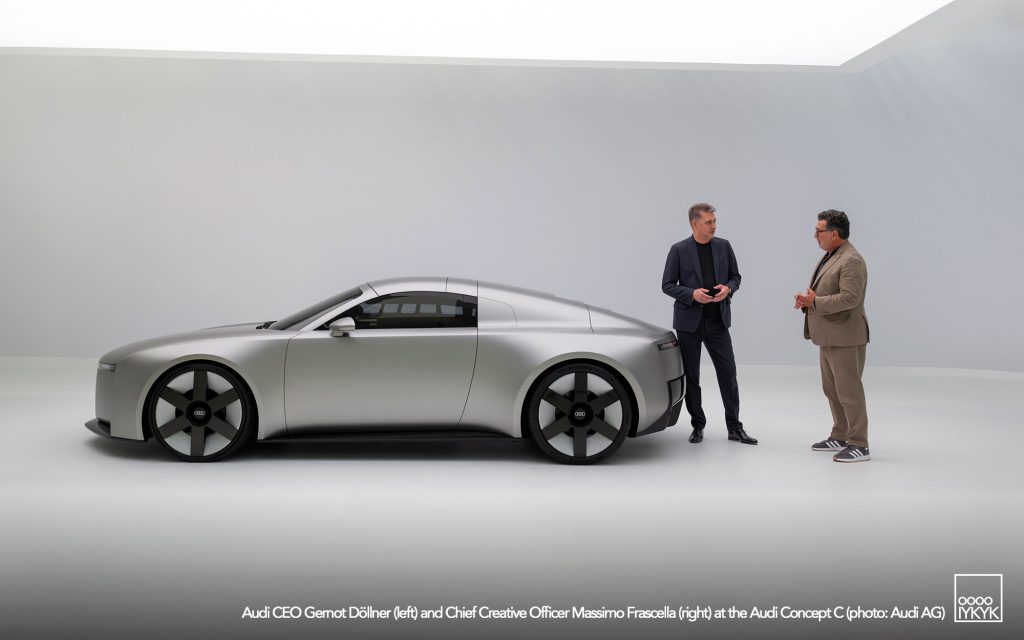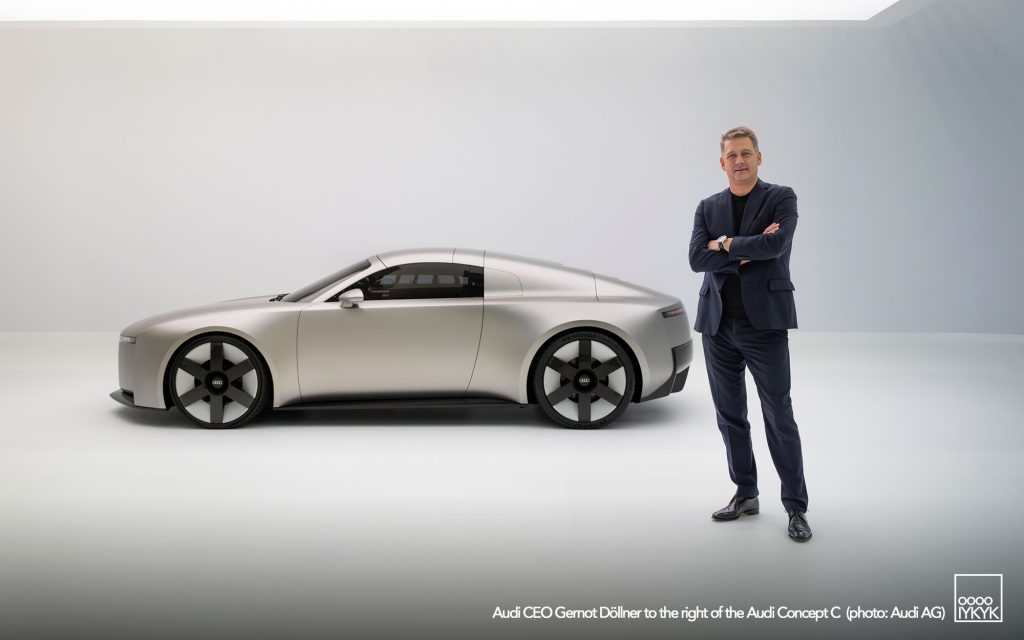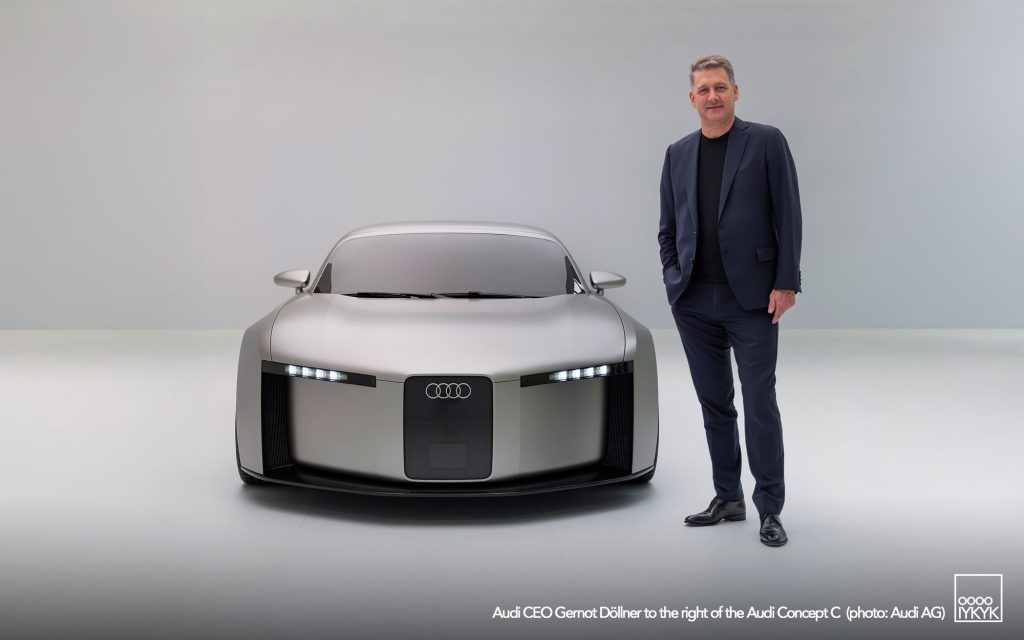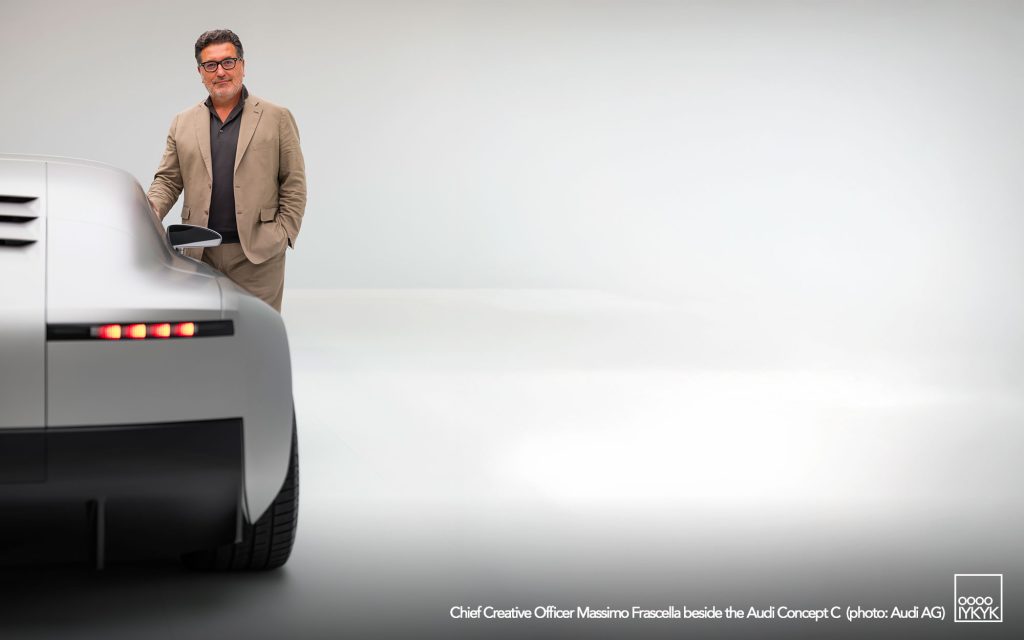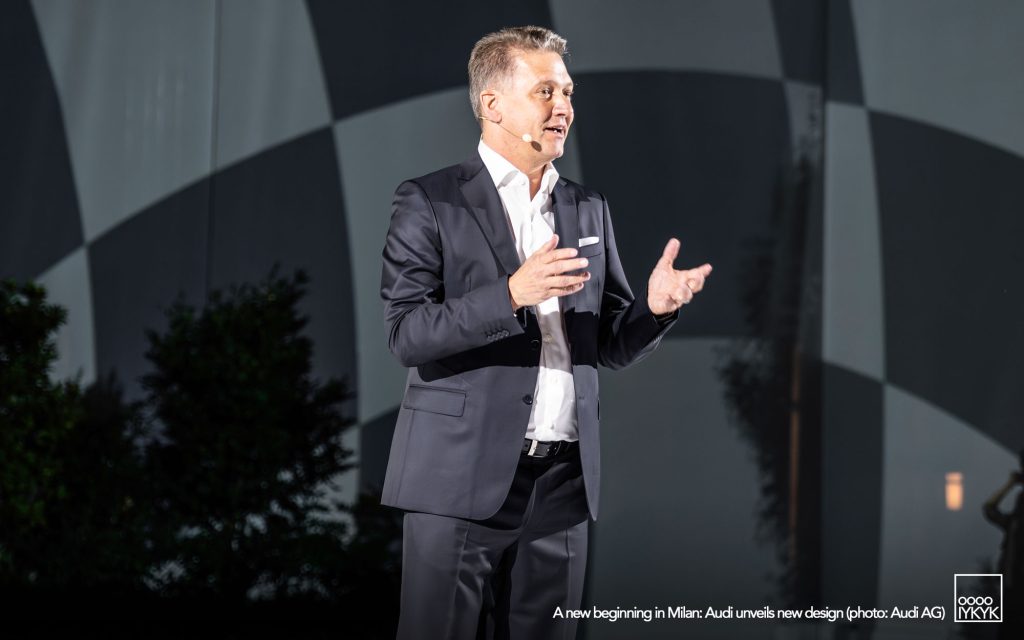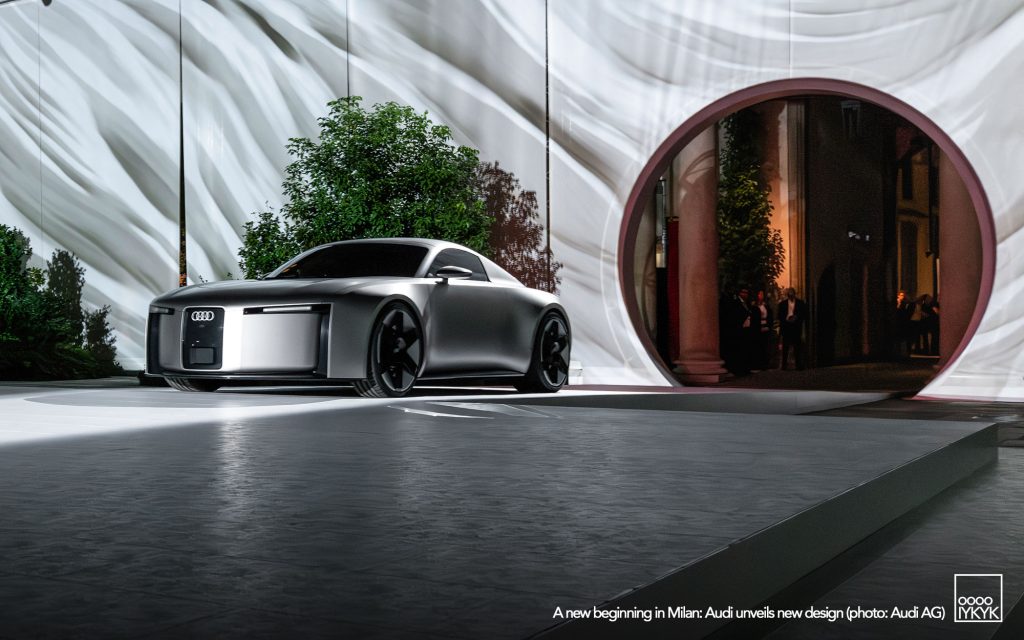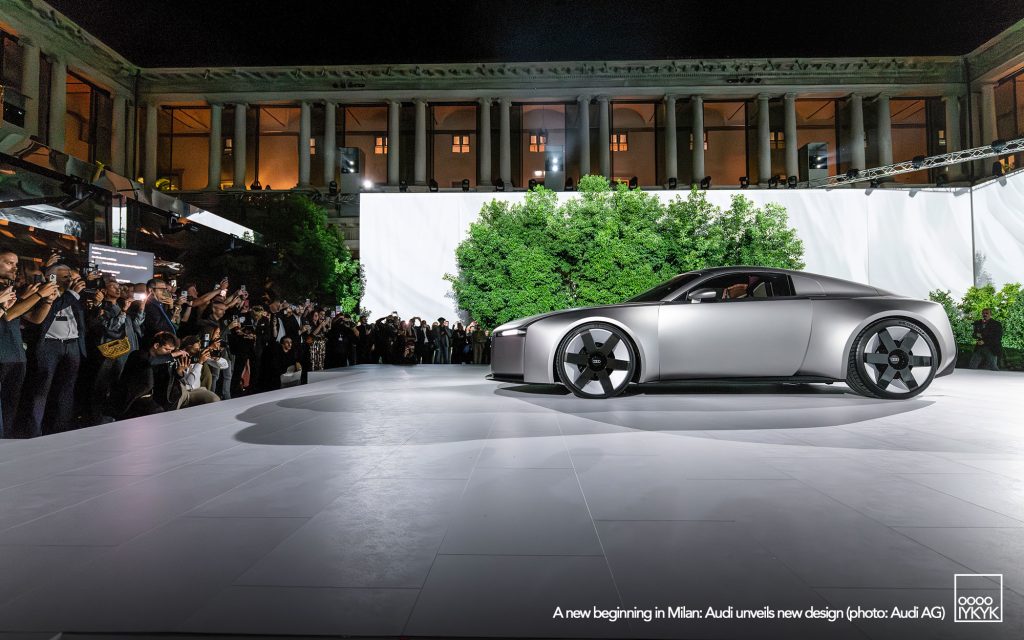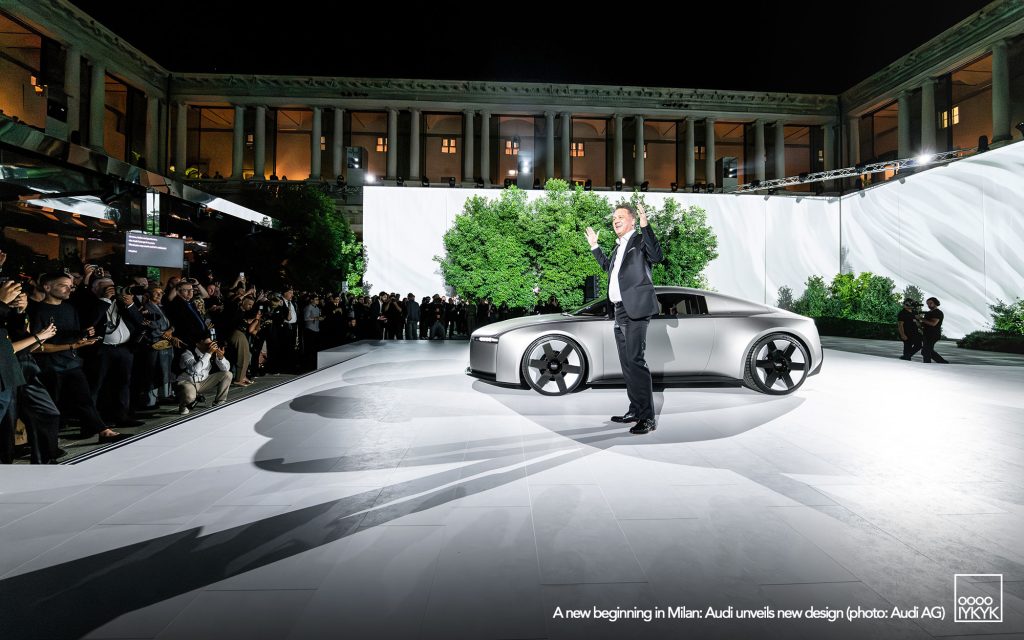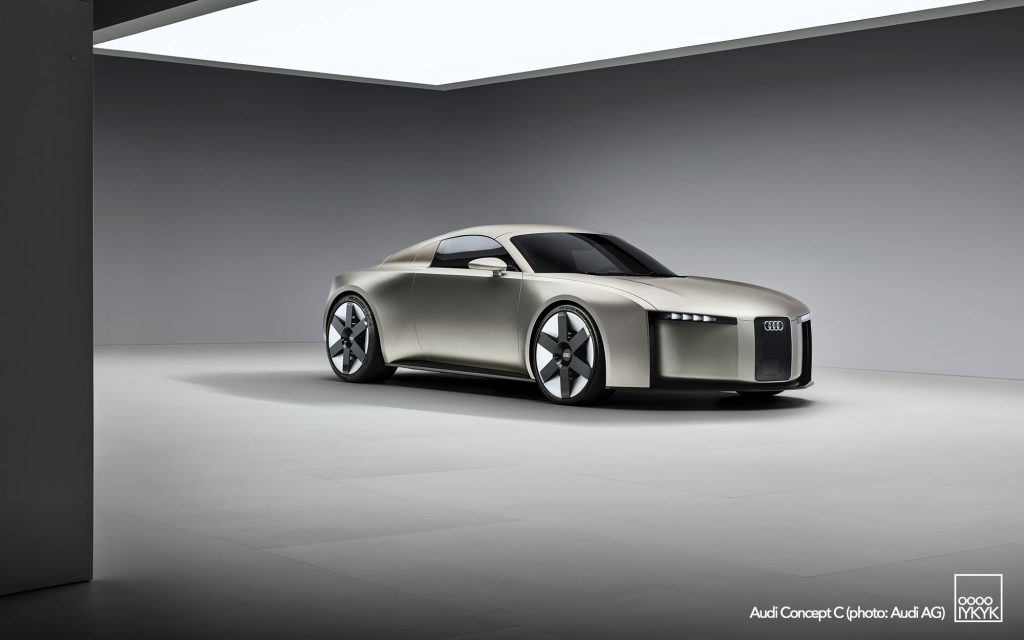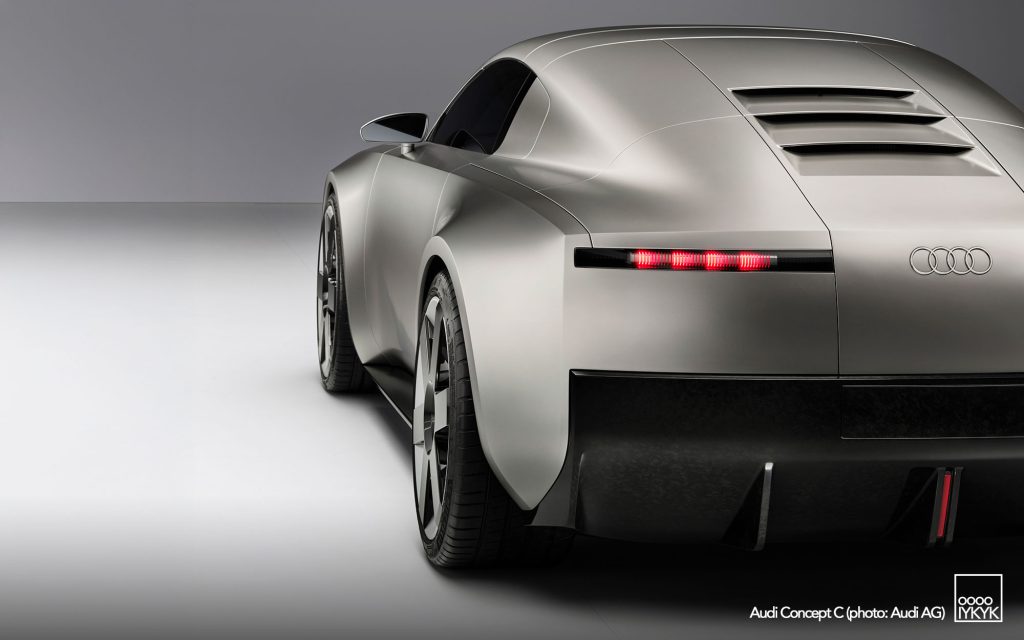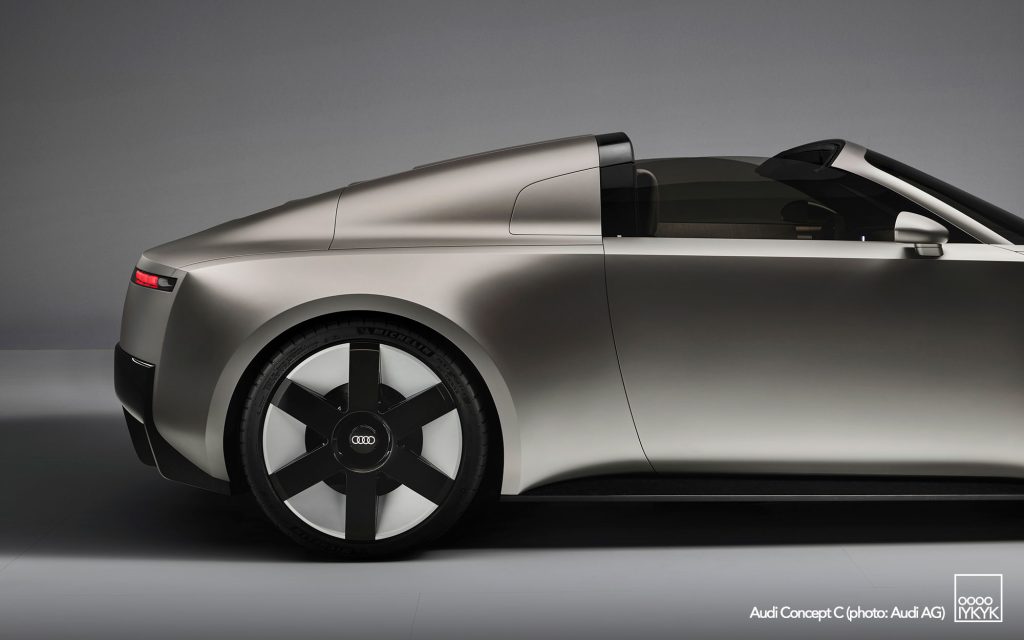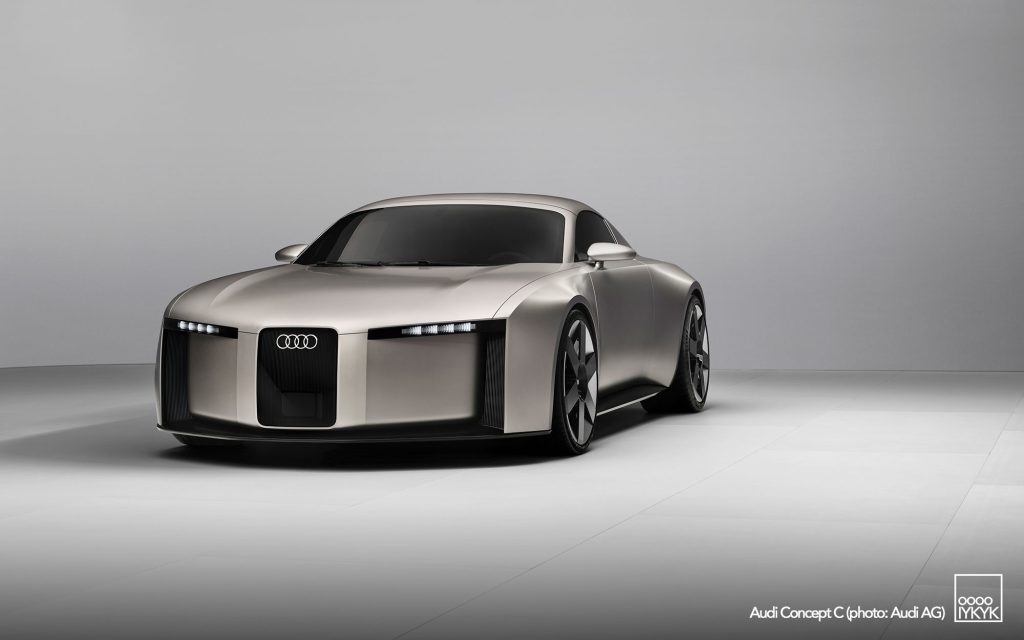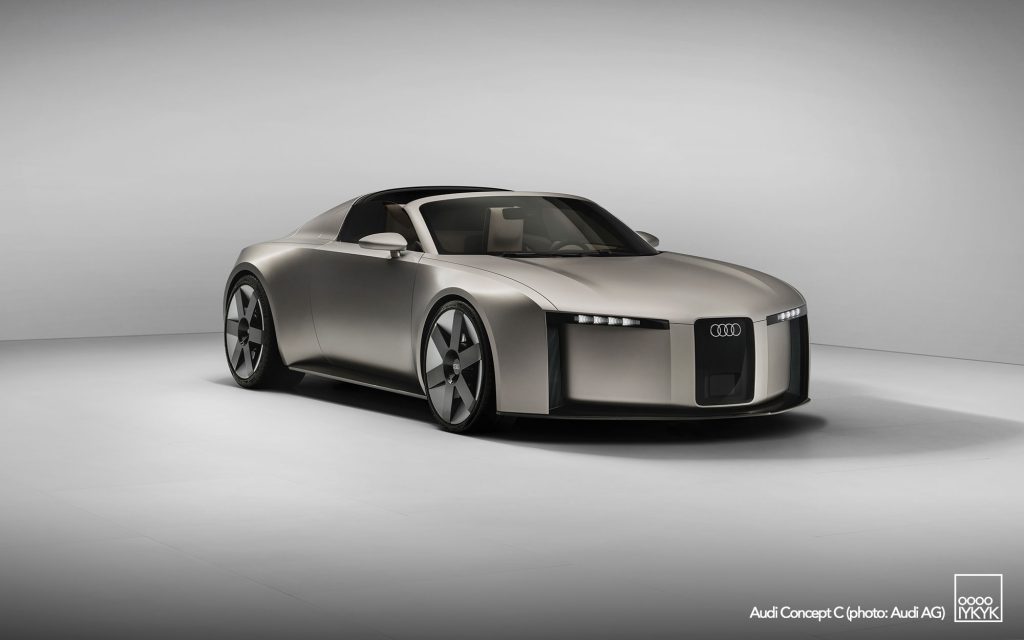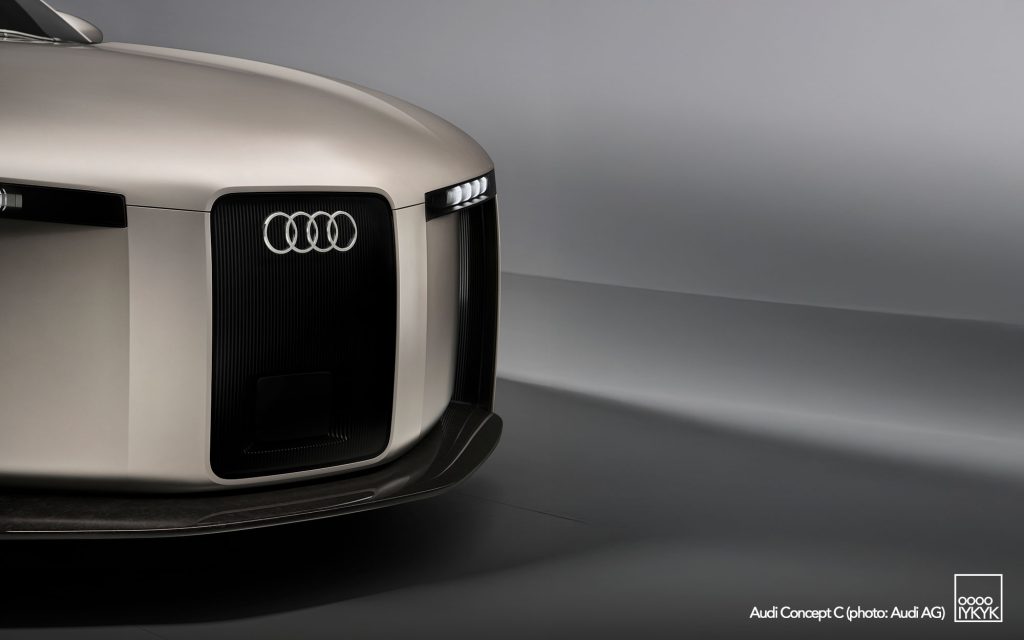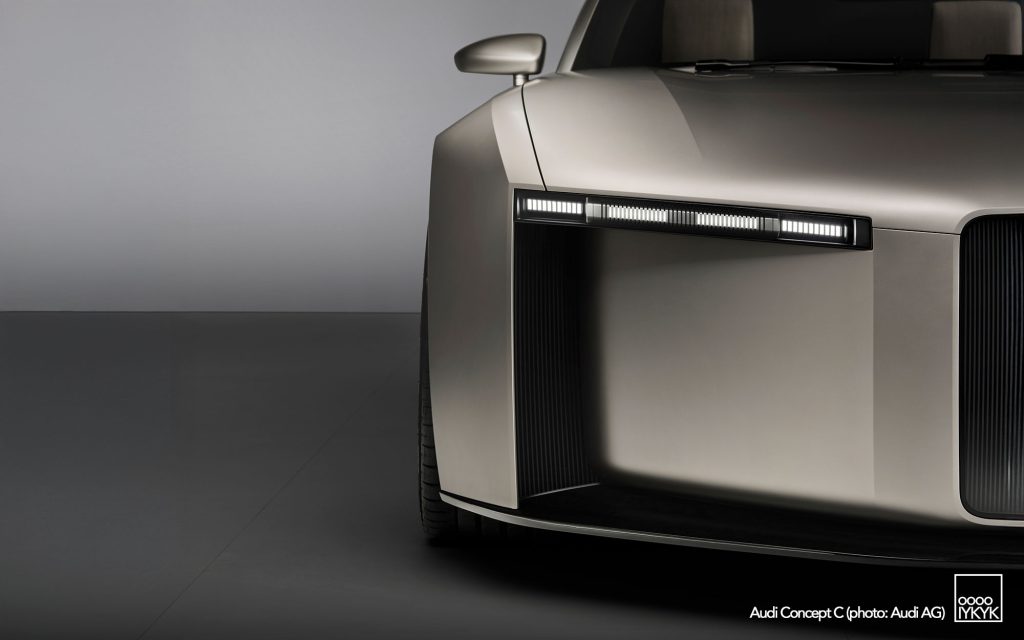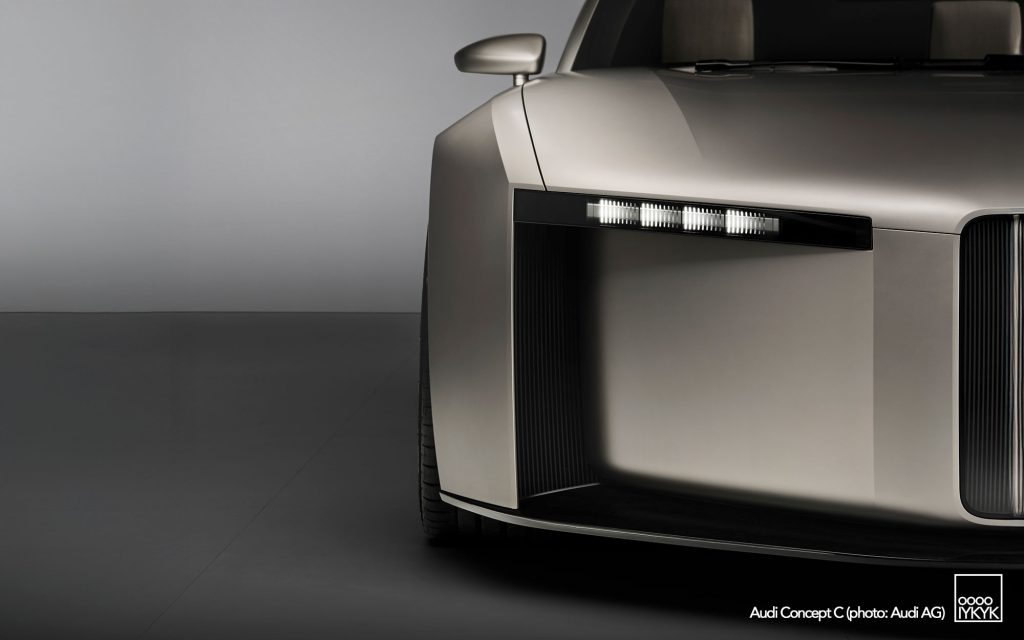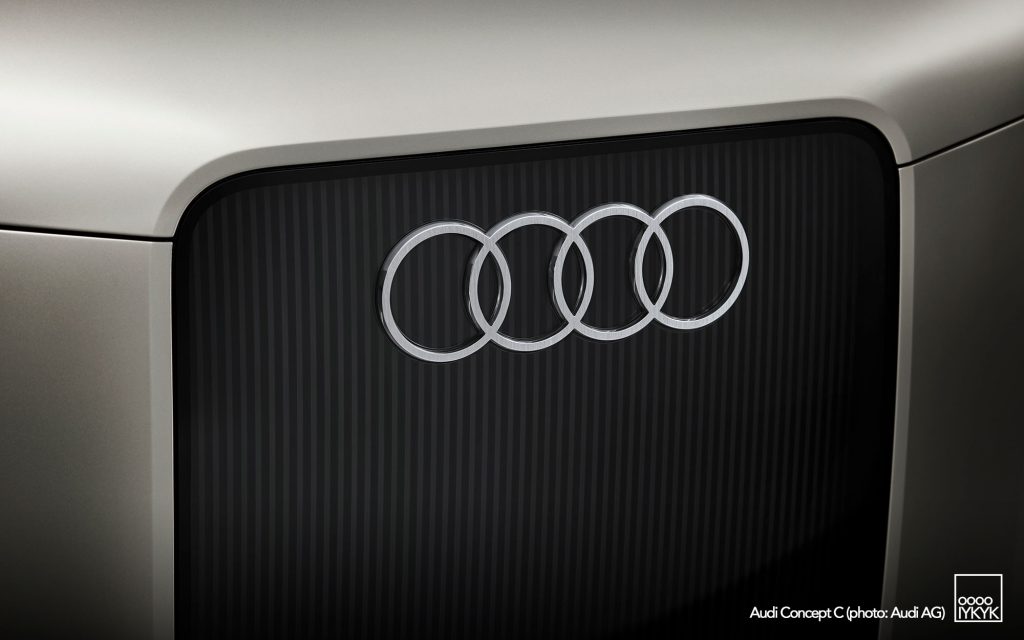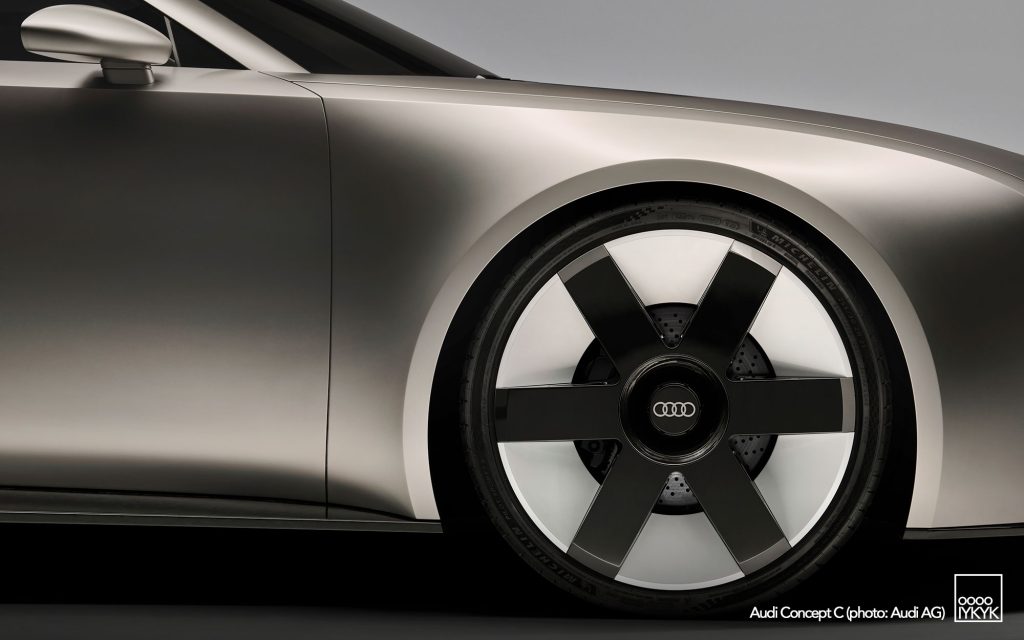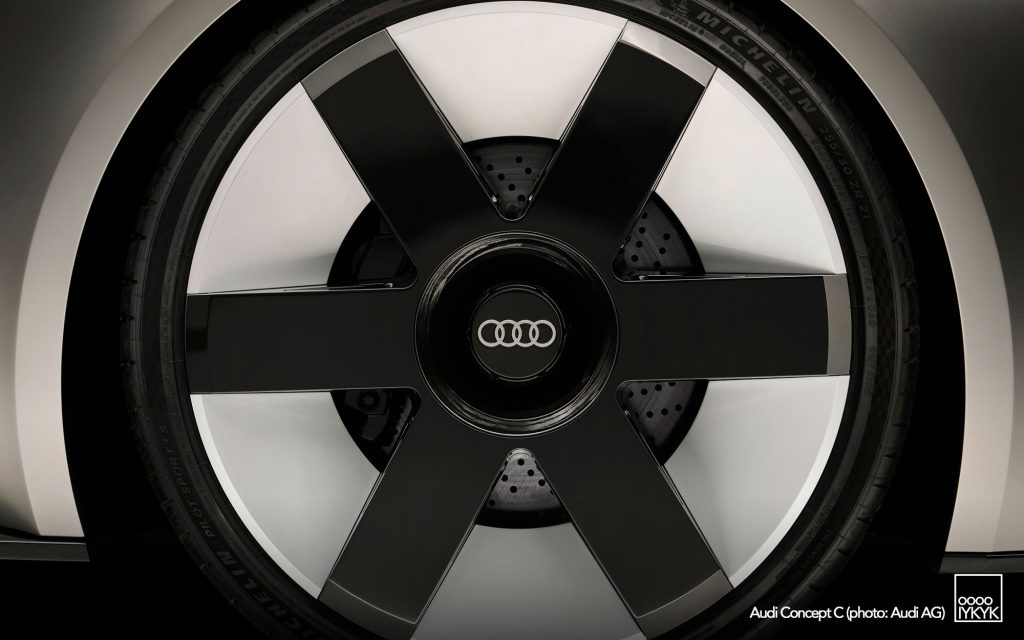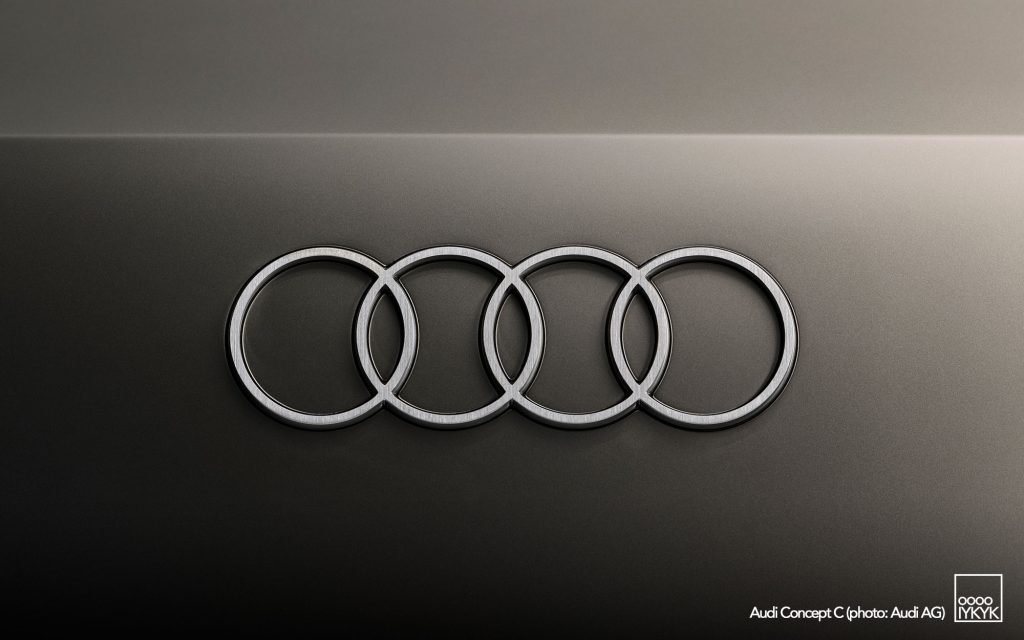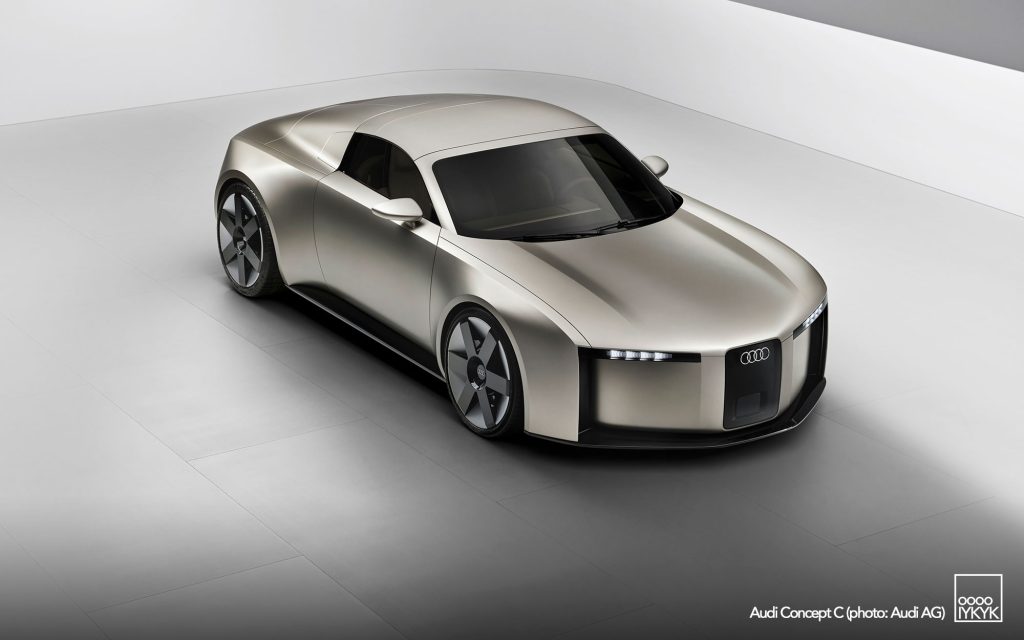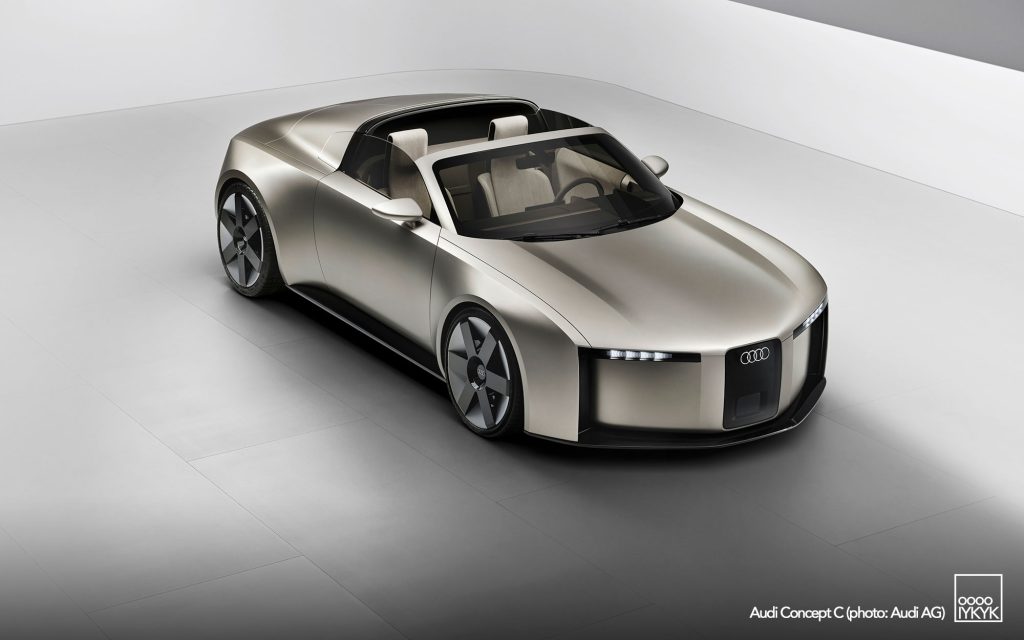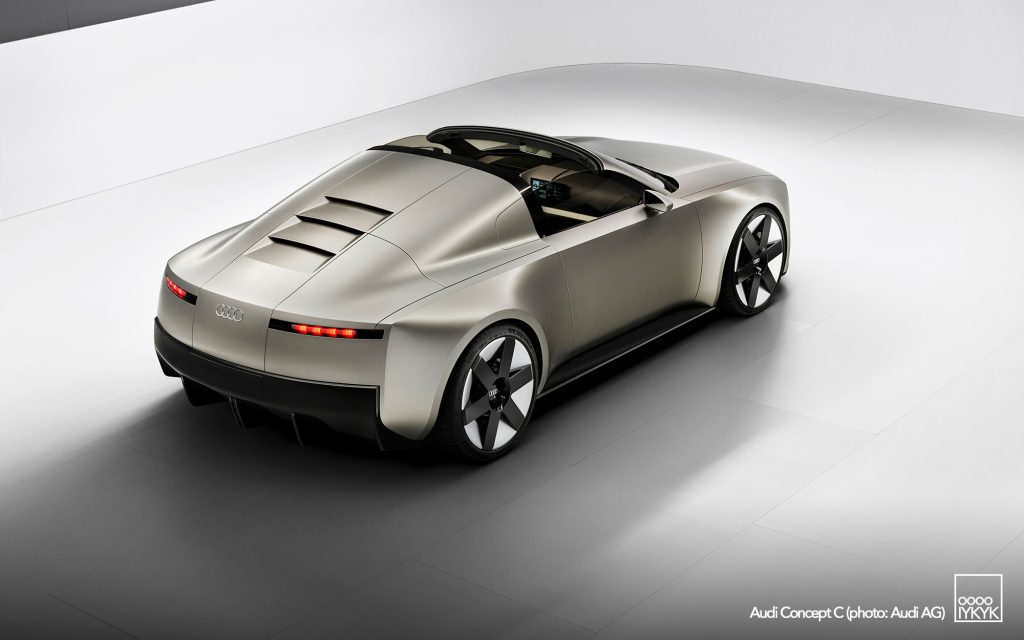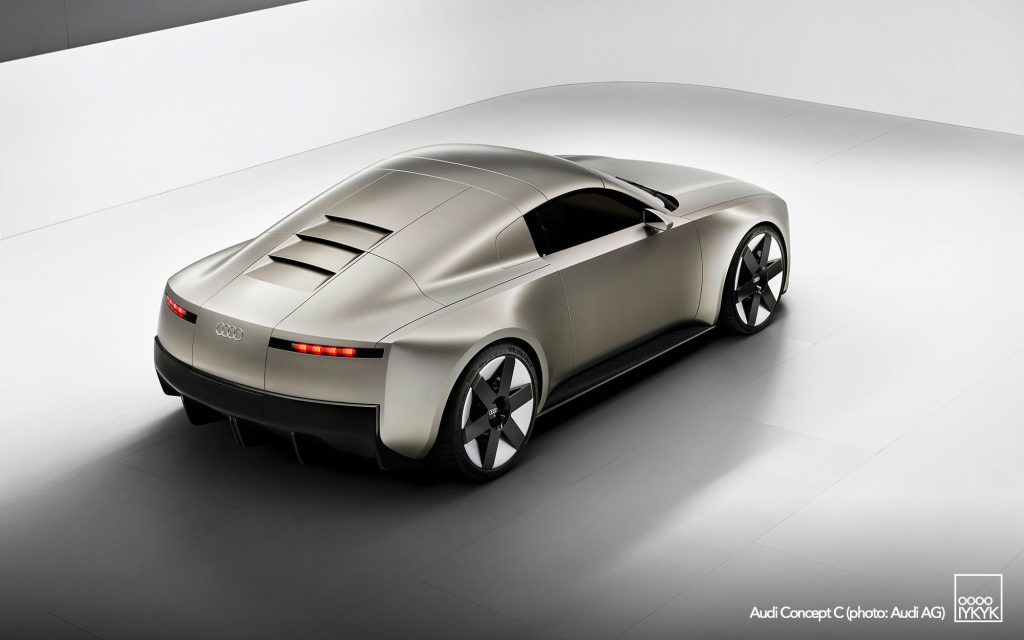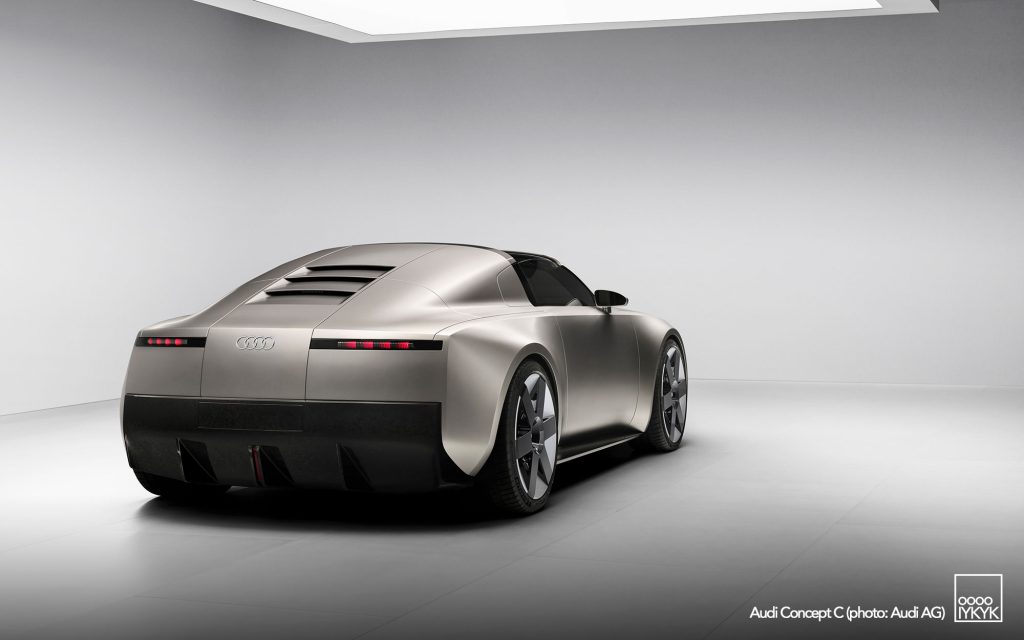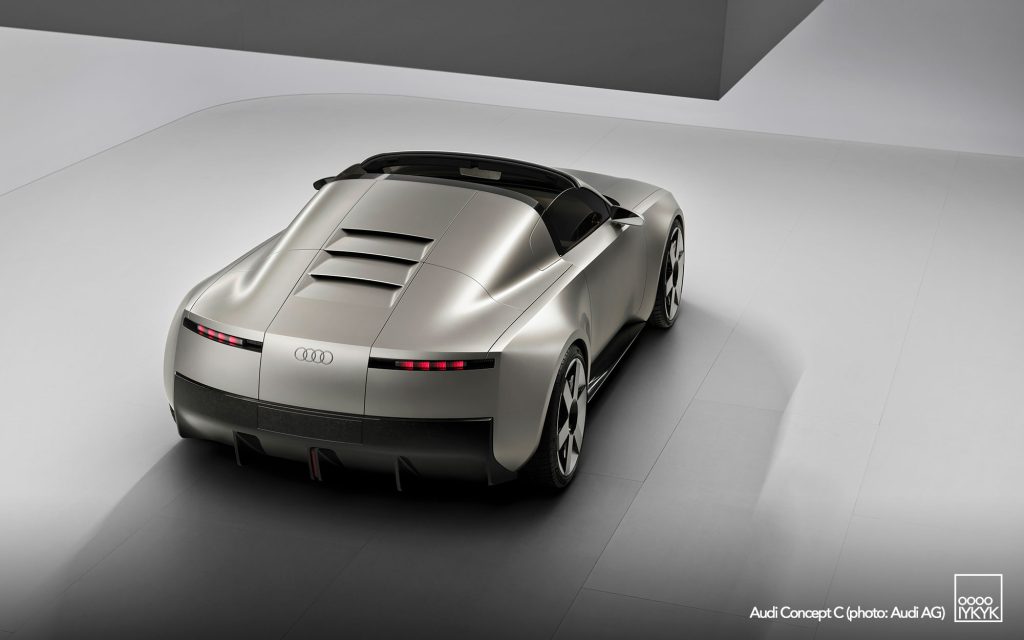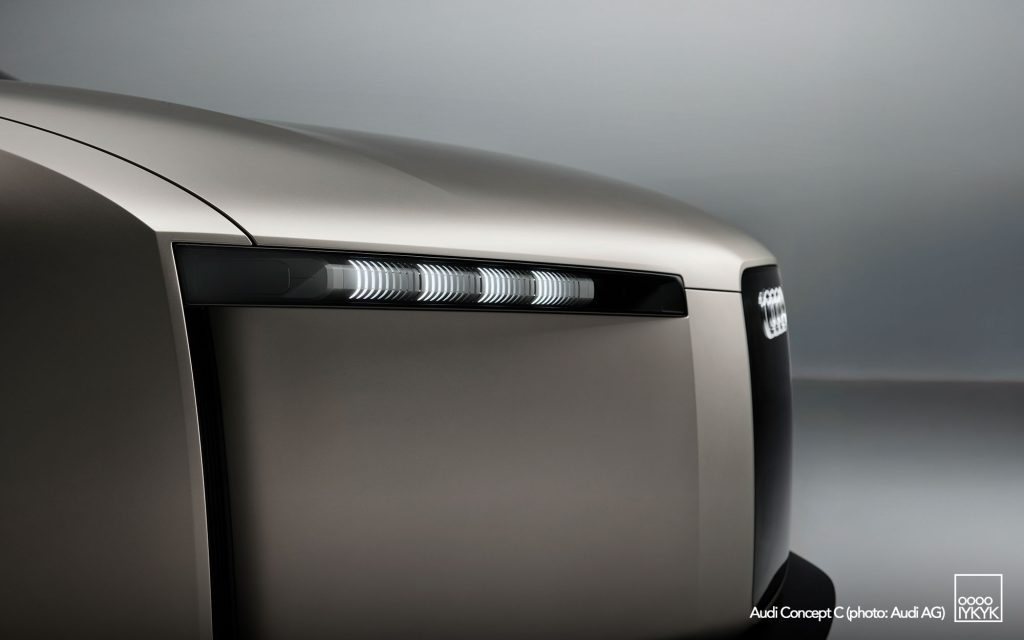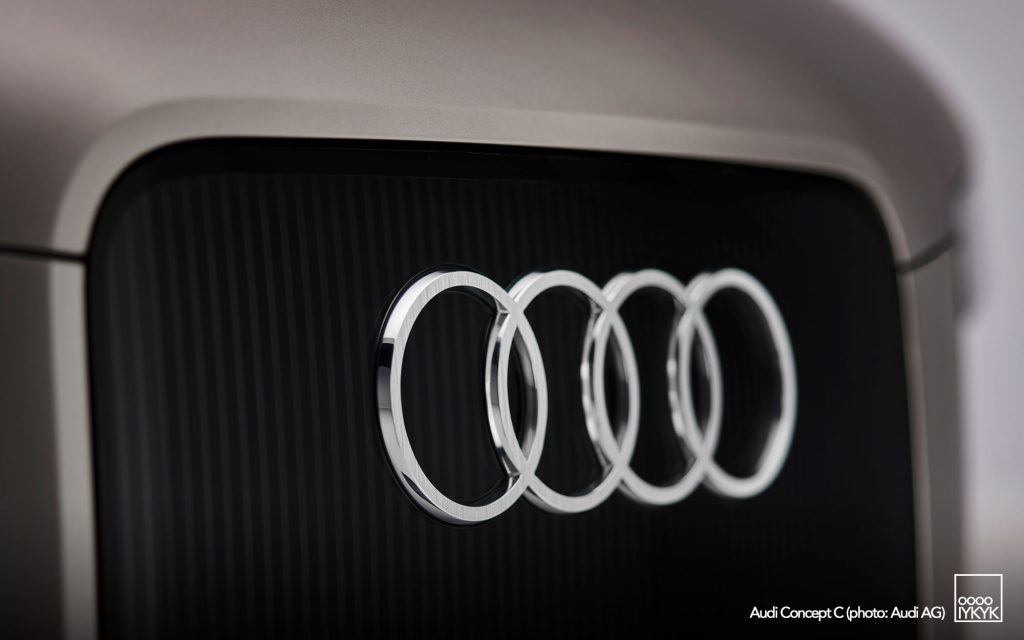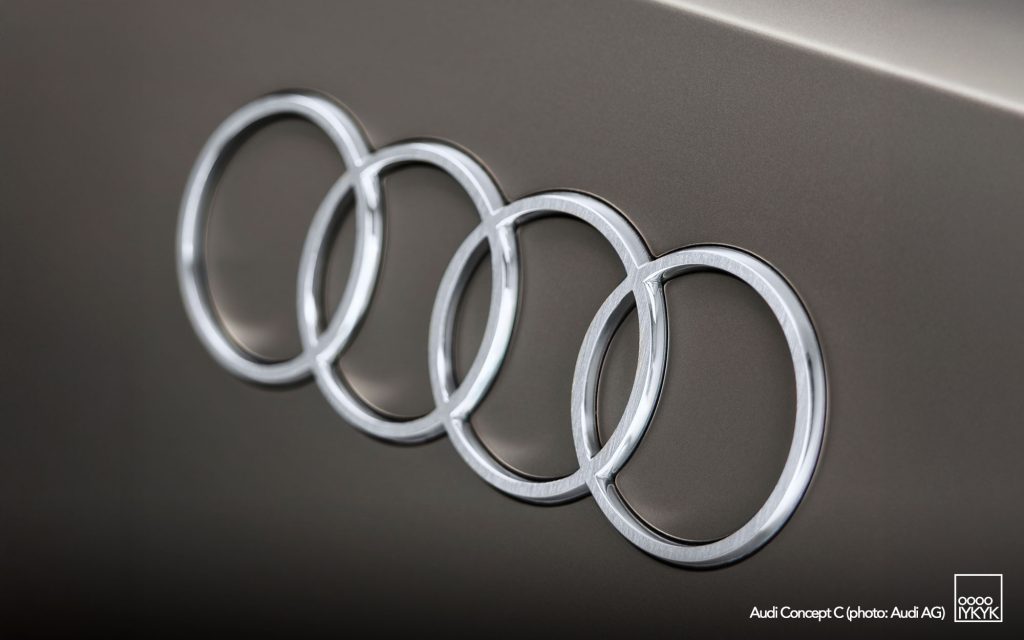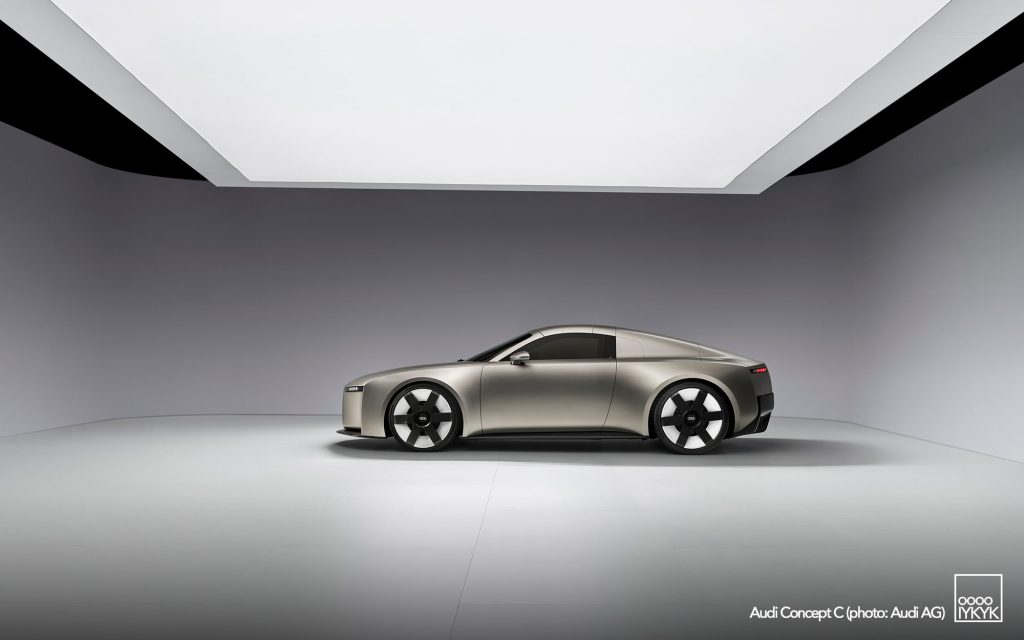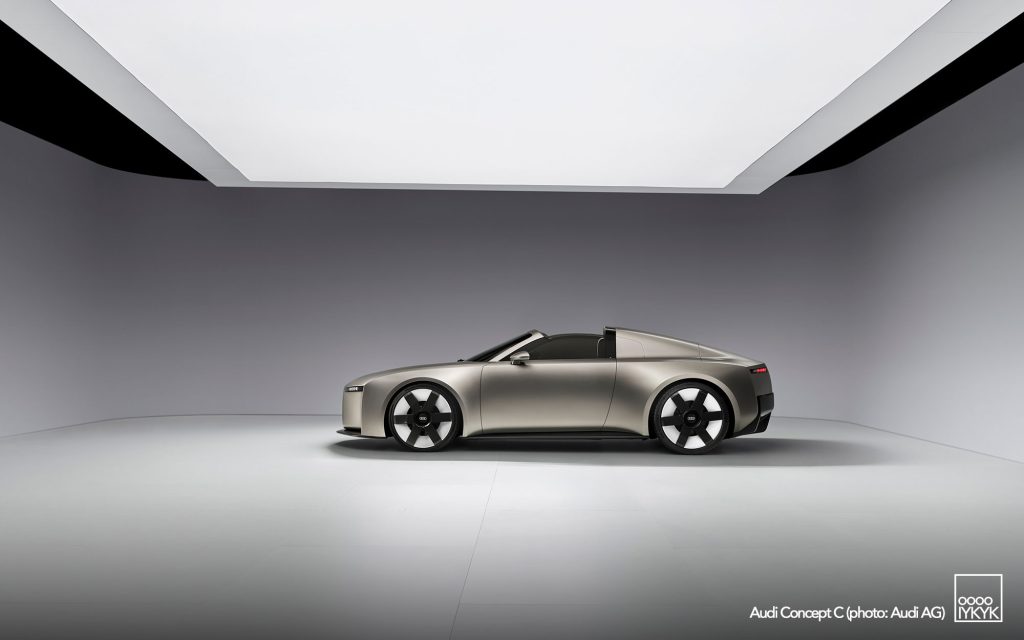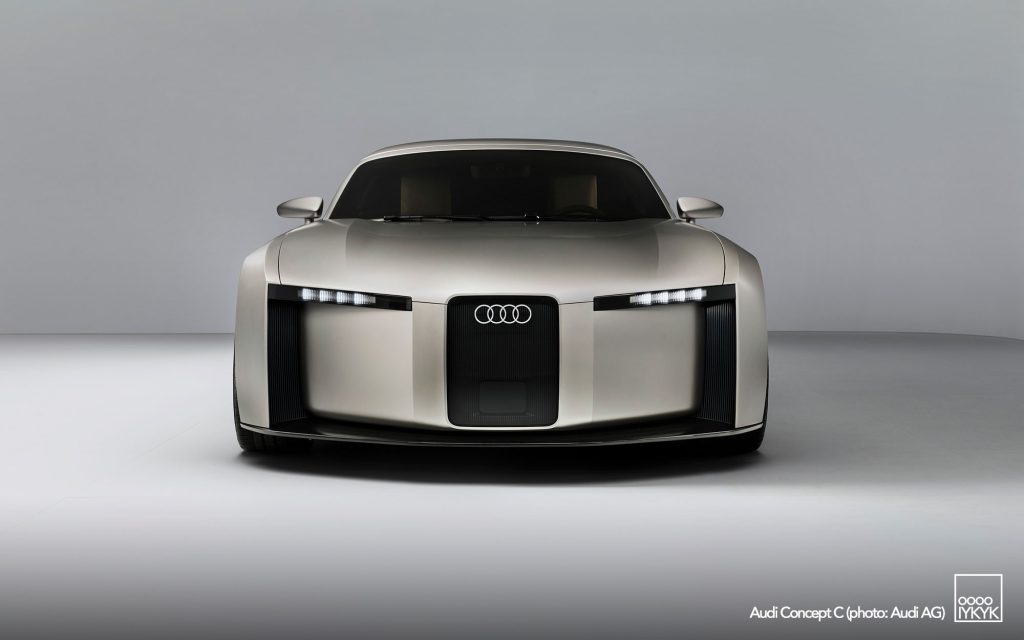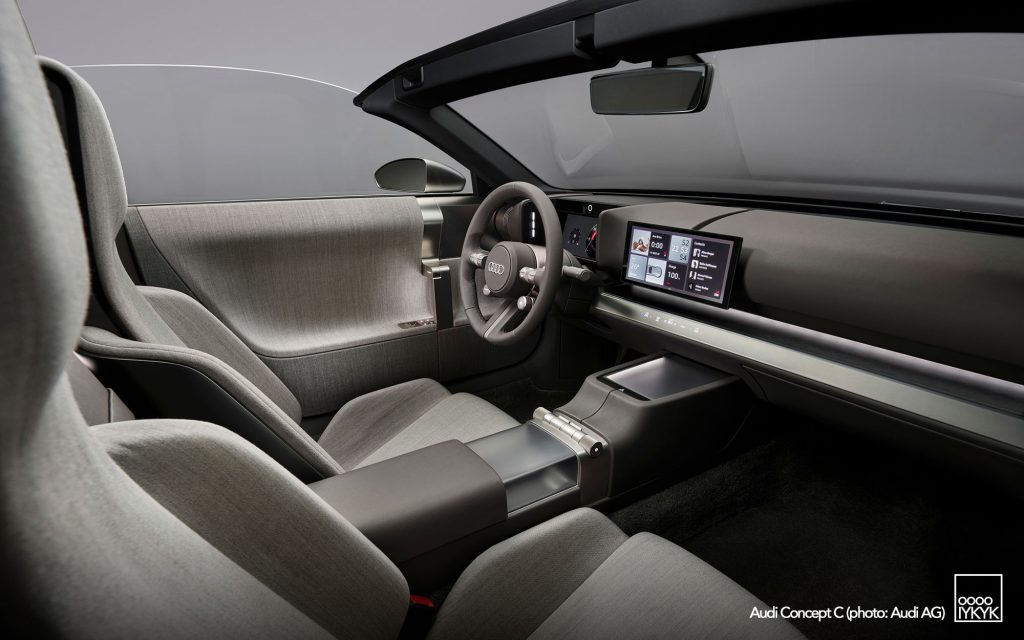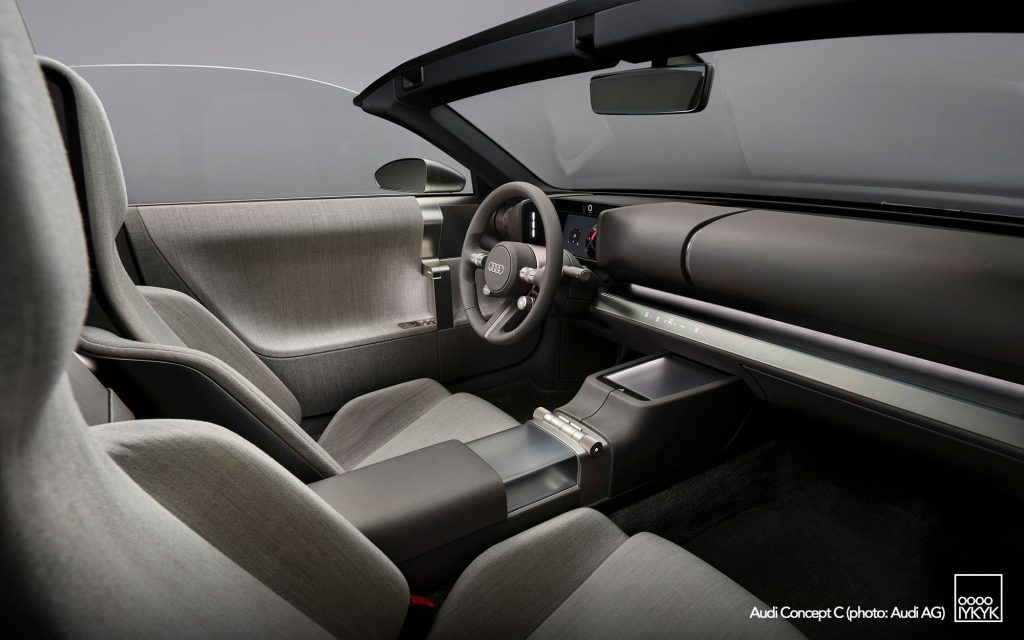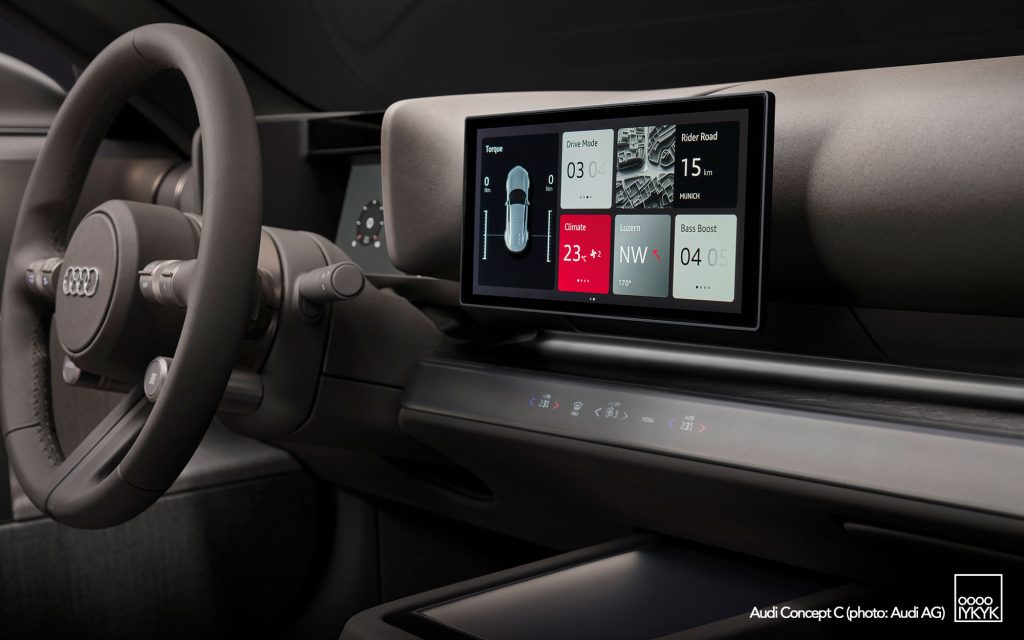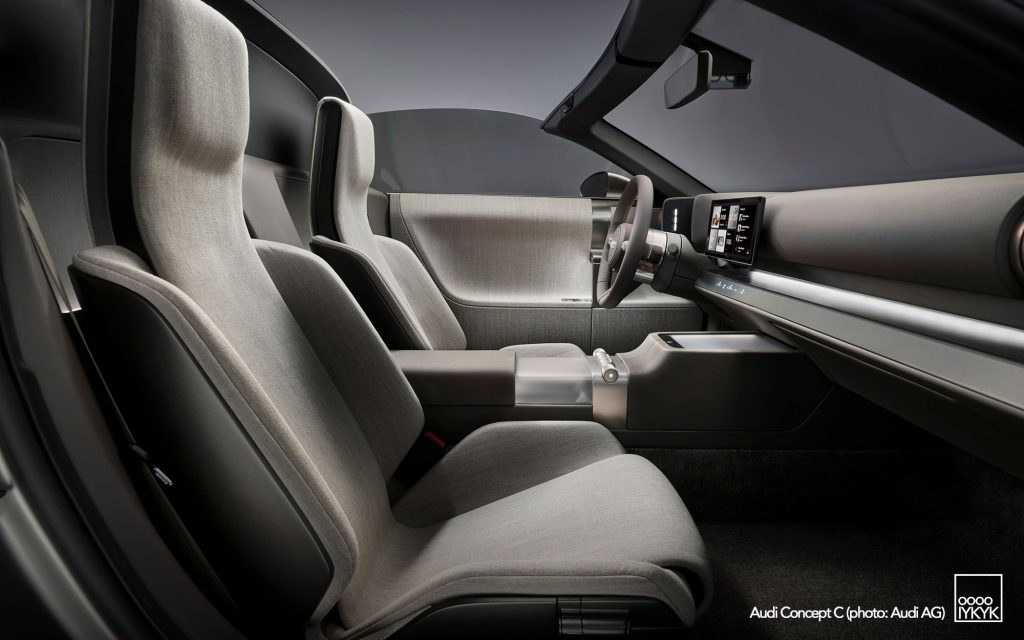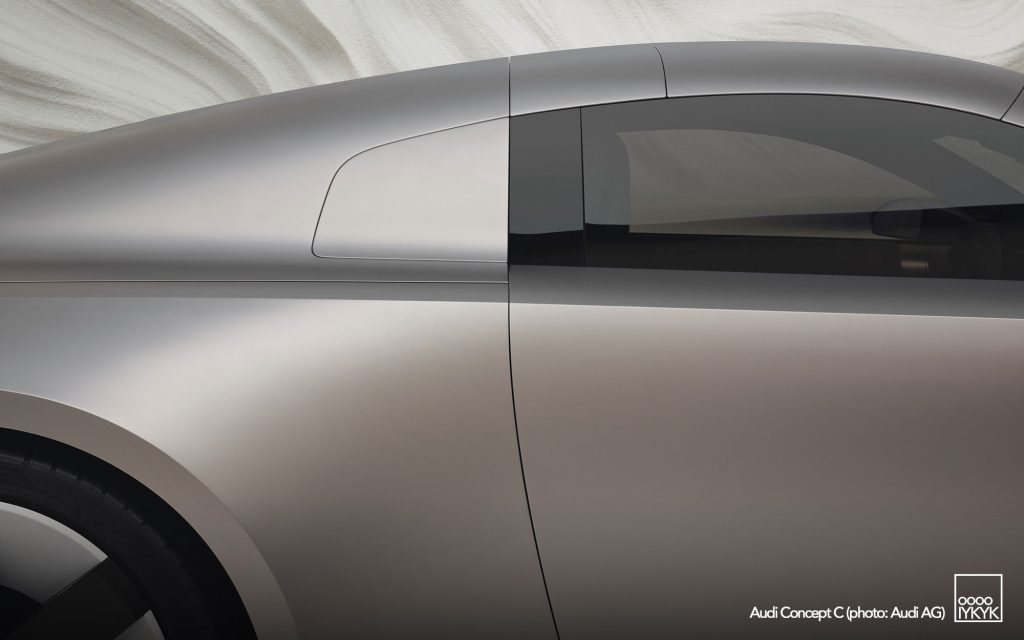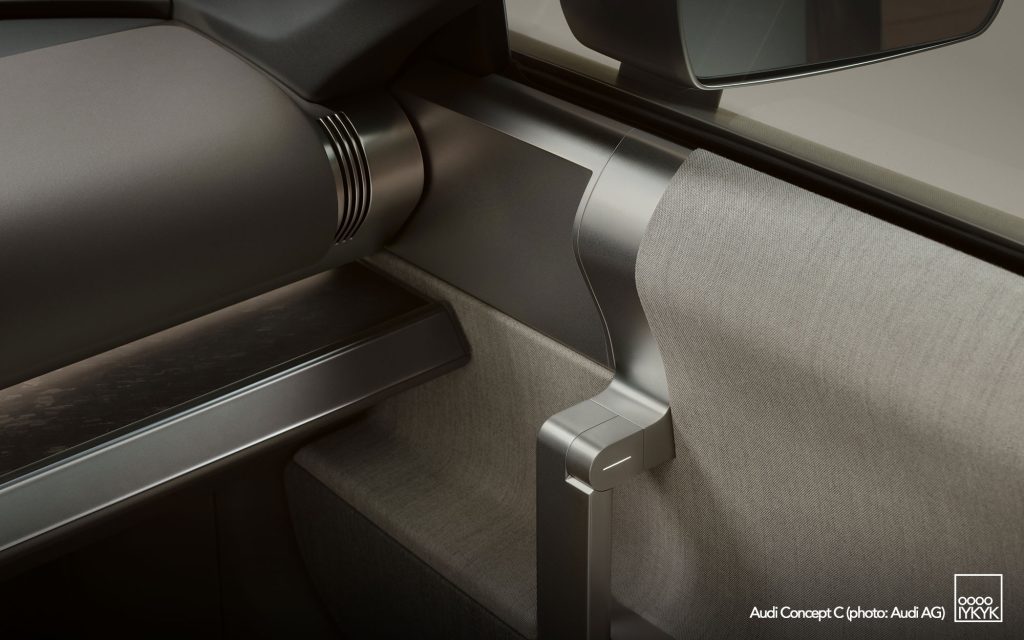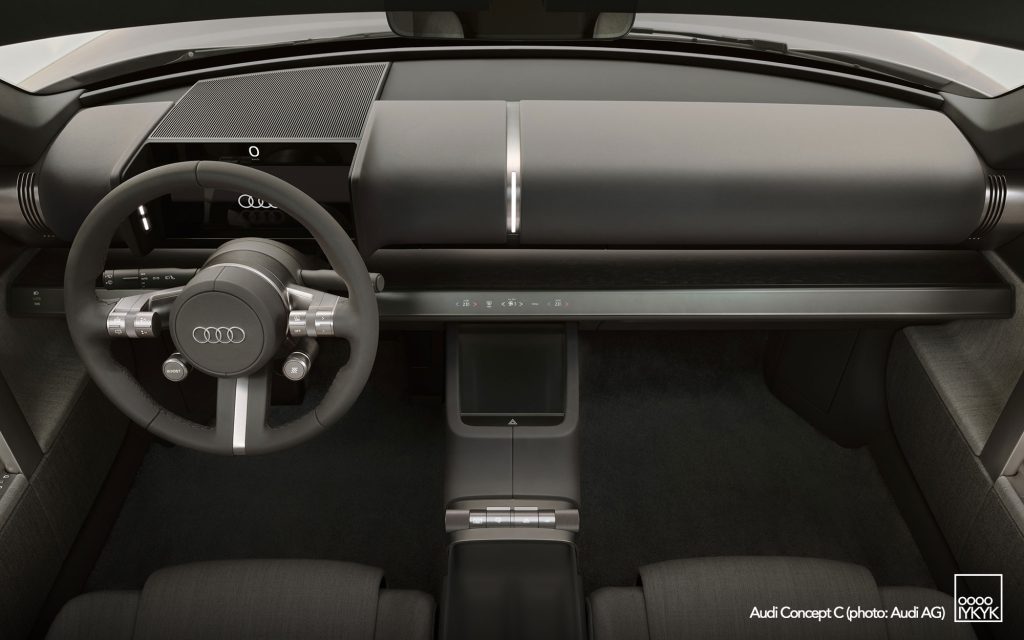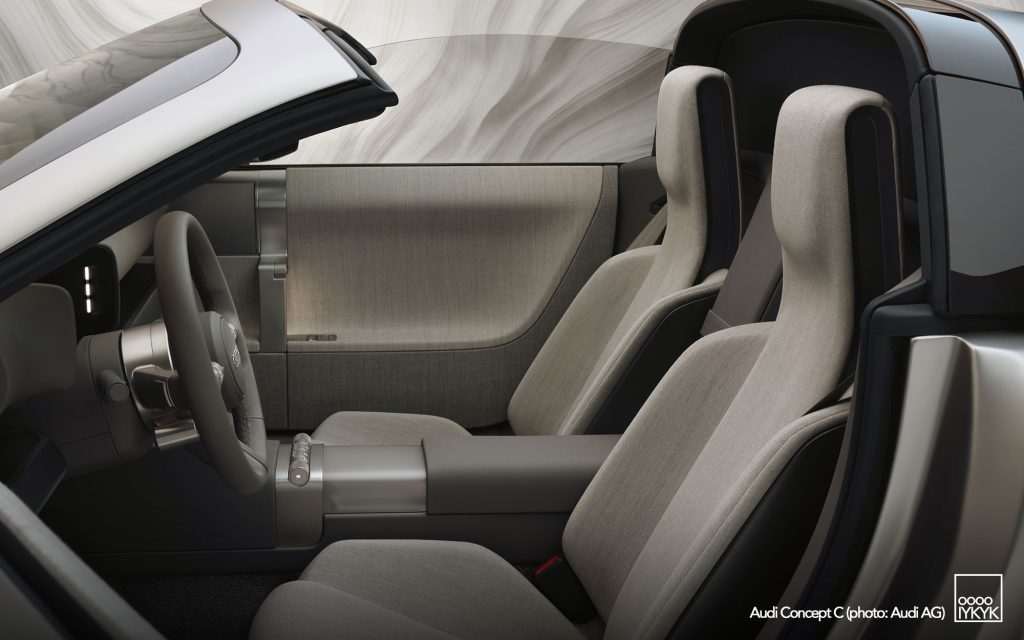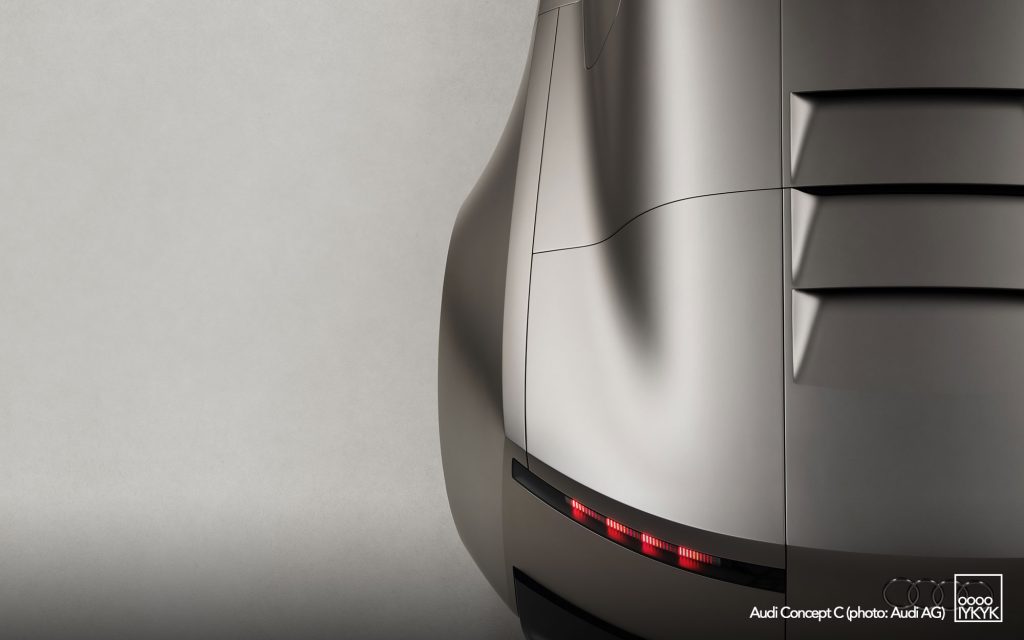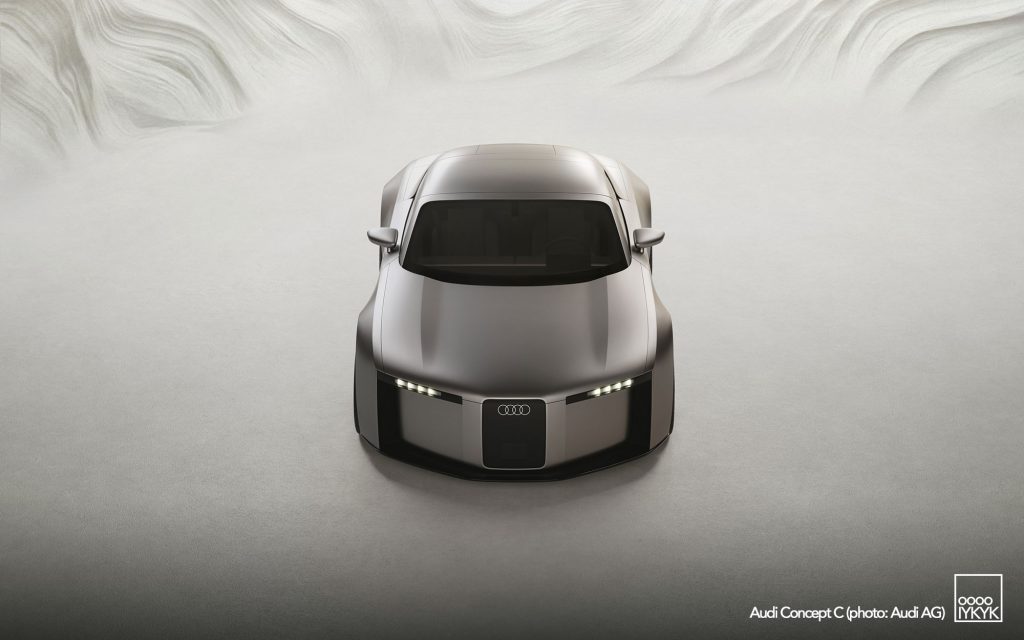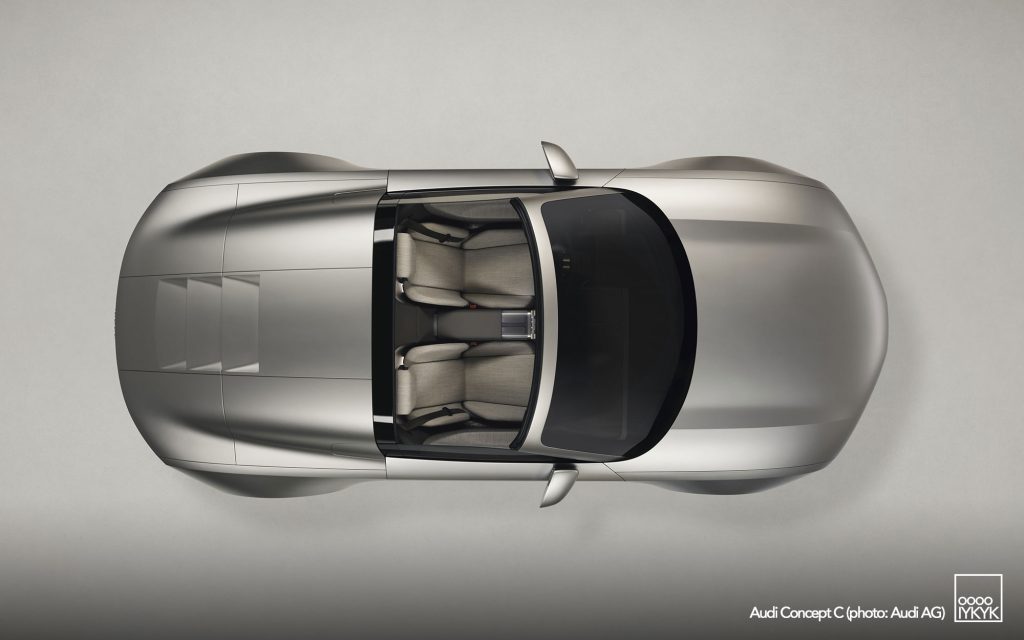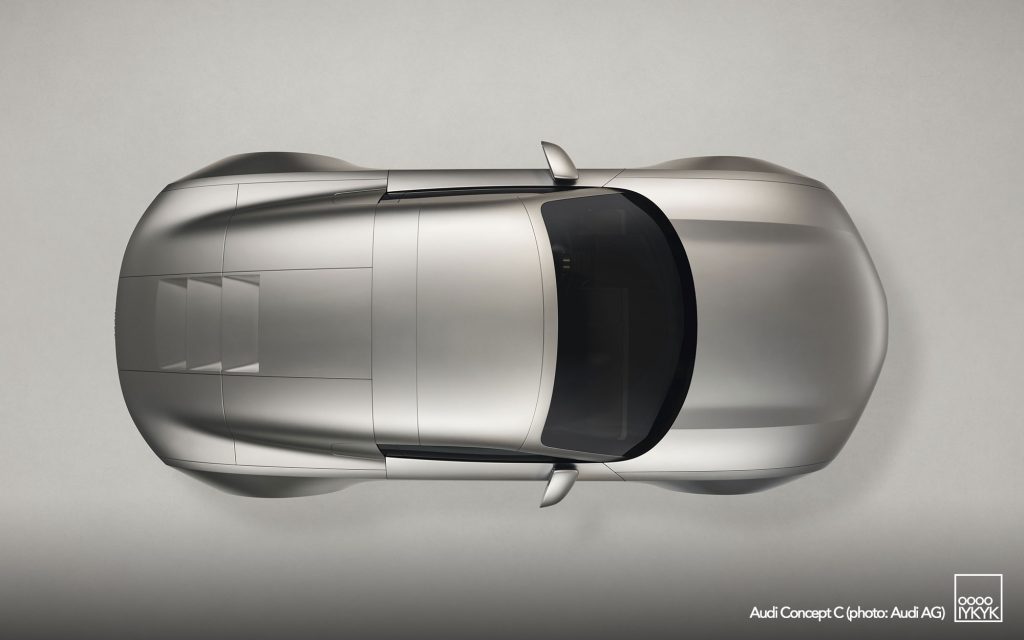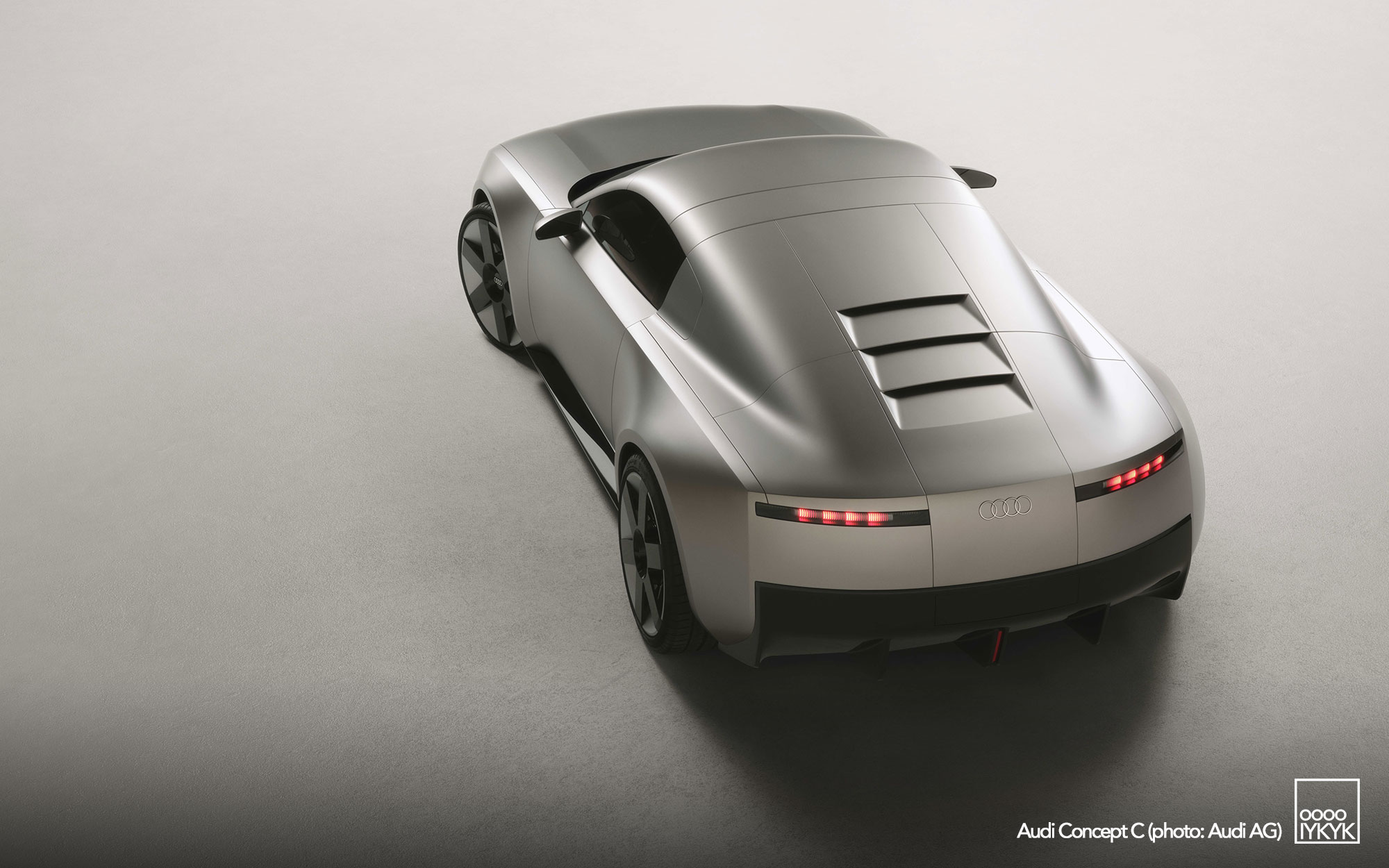Audi’s “TT Moment 2.0” is here, and with it the unveiling of its Concept C study in Milan. With it, the brand is signaling more than just another show car—it’s laying out a blueprint for the next generation of four-ring automobiles. A message was communicated at the event, held under the banner “Strive for clarity”: Audi is resetting its design language and corporate philosophy at large. This isn’t just a car—it’s the start of a redefinition.
Audi executives, led by CEO Gernot Döllner and Chief Creative Officer Massimo Frascella, emphasized that clarity will be the guiding principle across products, processes, and structures. In other words, Audi intends to strip away clutter, both in its cars and in the way it operates. Milan, with its history of design excellence and Renaissance thought, provided the stage for this rebirth. Döllner himself drew parallels between visionary thinking from centuries past and Audi’s own ambitions to rethink what a modern luxury brand should be.
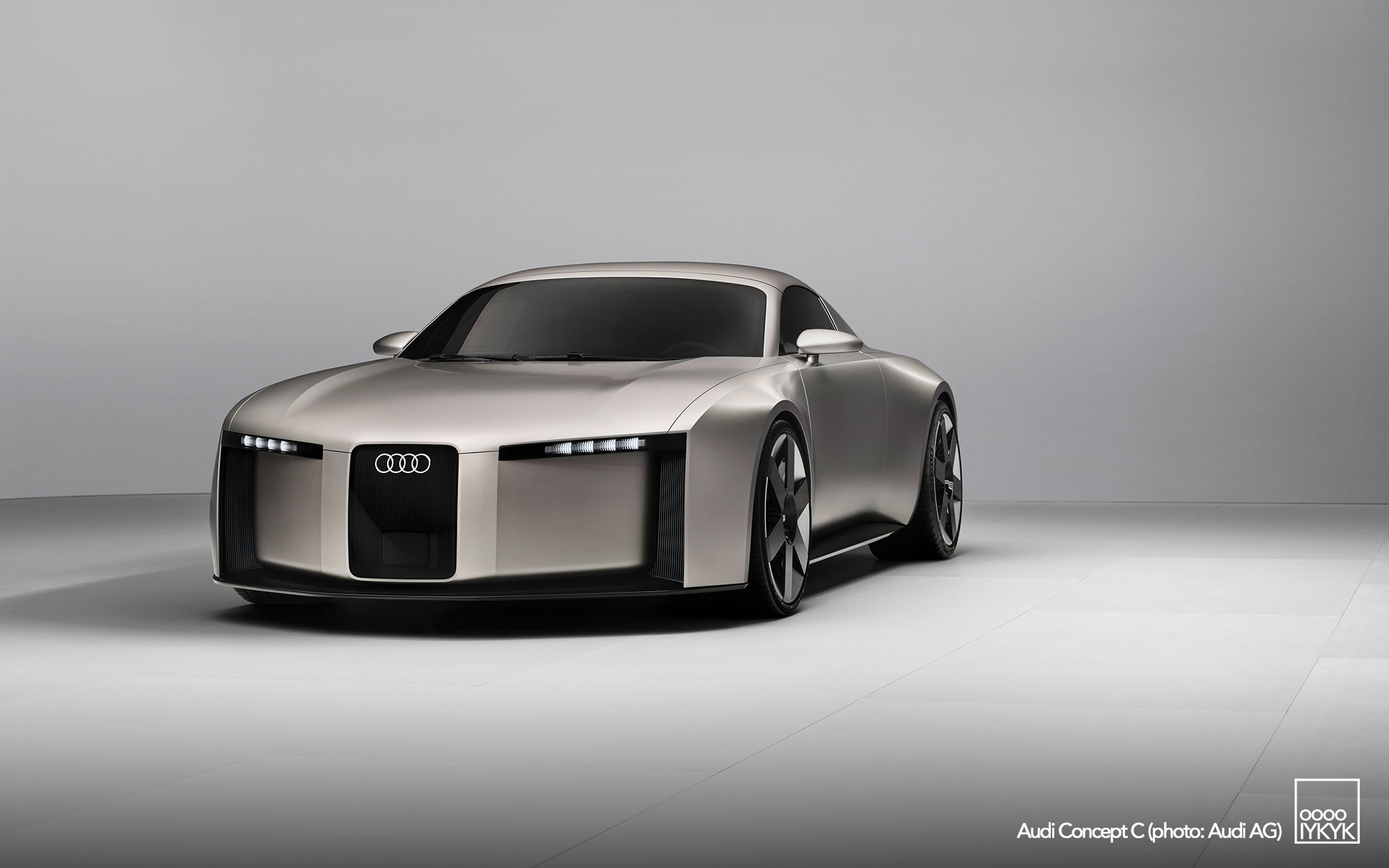
RADICAL SIMPLICITY AS CORE PHILOSOPHY
The Concept C embodies a new Audi aesthetic—defined by restraint, geometry, and emotion in equal measure. Frascella explains: “Radical simplicity is at the heart of our approach. We achieve clarity by reducing everything to the essential.” That principle governs not just the bodywork but the interior, technology and even how Audi envisions the company moving forward. It’s design in service of purpose, rather than design for its own sake.
Where past Audi studies often sought attention with flourishes, the Concept C aims for timelessness. Its exterior surfaces are taut, deliberate, and uncluttered, interrupted only by purposeful details. The interior adopts the same approach—an architecture reduced to concise lines and carefully placed tactile controls. The goal is to provide the driver with exactly what they need, no more and no less.
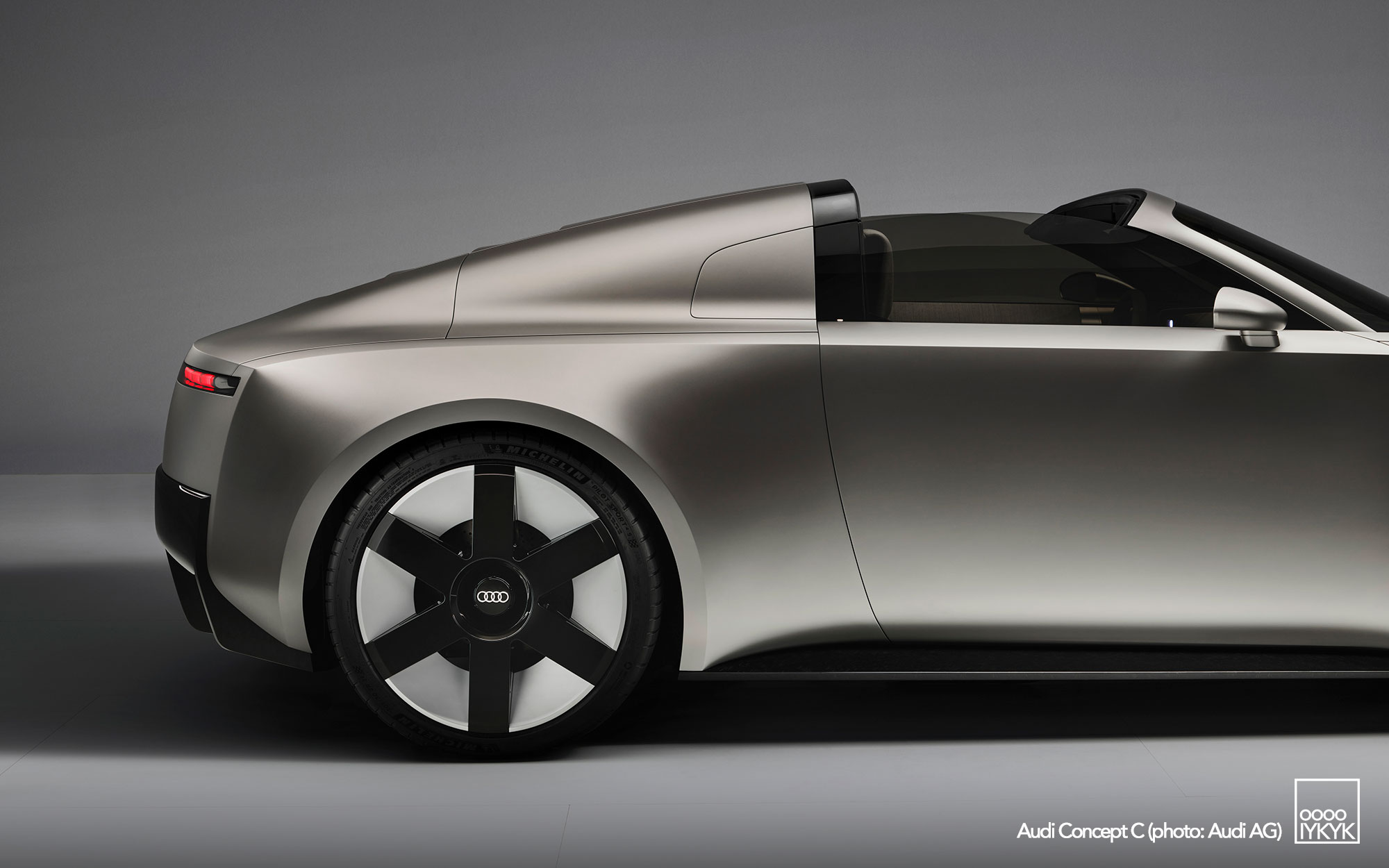
TWO-SEAT ROADSTER WITH AUDI DNA
At its core, the Concept C is a compact, all-electric two-seat sports car. Its most striking element is the vertical frame dominating the front fascia. Audi designers drew inspiration from two historic landmarks: the Auto Union Type C Grand Prix racer of 1936 and the third-generation A6 sedan launched in 2004. Both cars embodied clarity in form, and the Concept C revives that spirit for a new era.
The vertical frame also integrates the four rings and Audi’s new light signature. Each headlight and taillight features four horizontal elements, a motif that will define future models on the road. Flanking that vertical form, a strong shoulder line defines the car’s stance. The proportions reflect a central battery layout, with the cockpit set rearward, firmly planted over a wide body.
Most notable for enthusiasts, Concept C is the first Audi roadster to feature an electrically retractable hardtop. Composed of two elements, it preserves the car’s monolithic shape while allowing for open-air driving at the press of a button. At the rear, clean surfacing and horizontal strakes reinforce its sporty character without excess. The show car is finished in a Titanium hue—inspired by the precision and lightness of the metal itself.
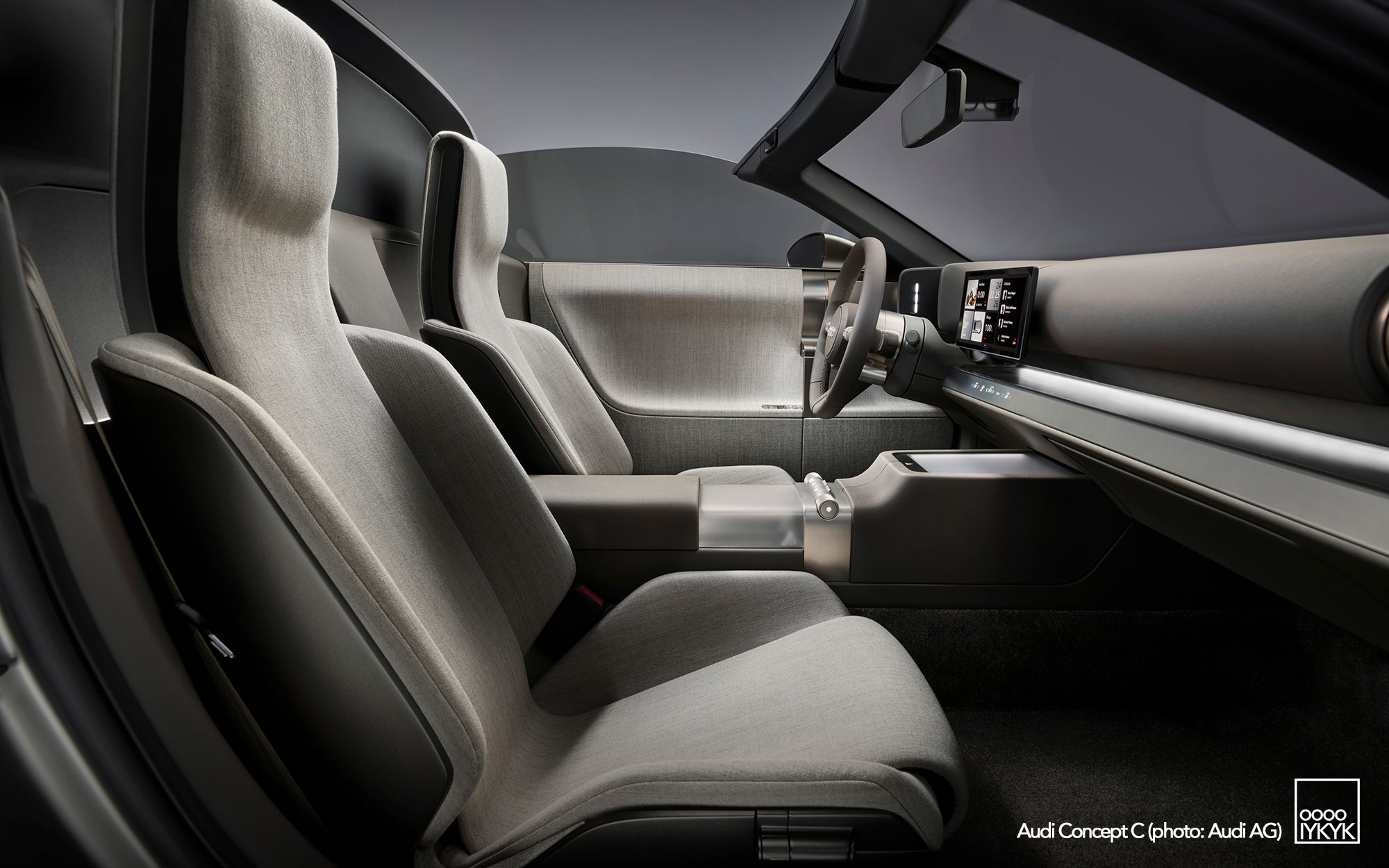
MINIMALIST BUT SOPHISTICATED INTERIOR
Inside, Audi has doubled down on this new design philosophy. Surfaces are architectural, with geometry dictating form rather than decoration. Anodized aluminum switchgear delivers tactile satisfaction, each control engineered with the distinctive “Audi click.” The steering wheel becomes the centerpiece, with real metal rings and carefully weighted haptic responses.
Colors echo the Titanium exterior, creating a tonal harmony that emphasizes warmth and sophistication. Natural materials—an increasingly common Audi theme—are paired with indirect ambient lighting that highlights textures without distraction. The result is an environment that feels both minimal and premium, aligning with the ethos of athletic minimalism.
Technology, too, follows the “shy tech” philosophy—present when needed, invisible when not. The Concept C employs a 10.4-inch foldable center display, tucked away until relevant. Information is presented contextually, tailored to the moment. Together with physical haptics on the steering wheel and center console, it ensures the driver never fumbles for controls. Audi wants interaction to feel intuitive, precise, and instinctual.
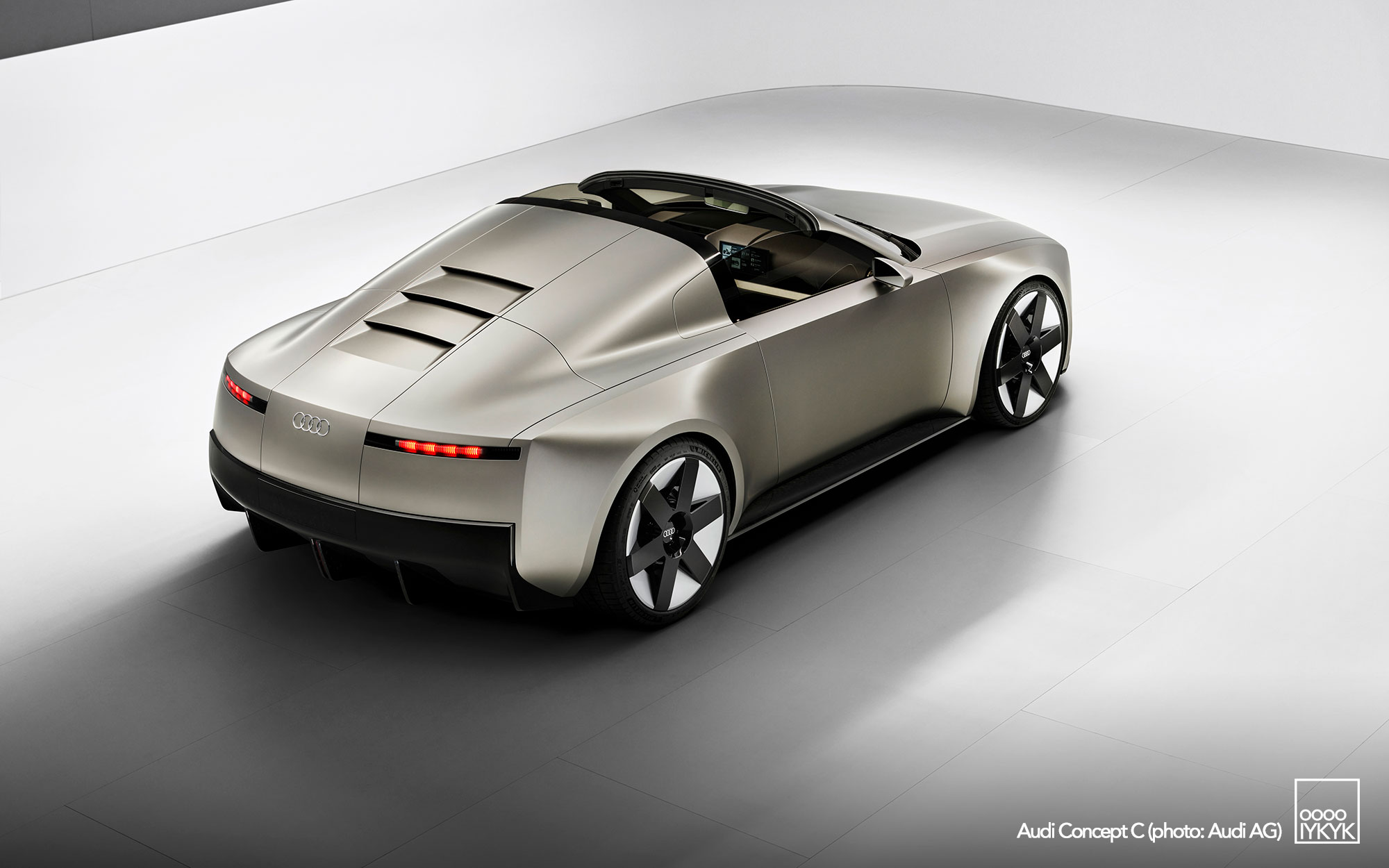
BEYOND THE CAR, A CORPORATE RESET
Döllner made clear that this philosophy reaches beyond aesthetics. “The way we design our vehicles is the way we will shape our company,” he said. For Audi, clarity is not just styling—it’s a compass for decision-making, product planning, and organizational restructuring.
This ties directly into the company’s “Audi Agenda,” a strategy launched in 2023 to overhaul its business. Investments are already beginning to be seen: eight billion euros committed to German facilities by 2029, a dedicated Chinese sister brand, and a laser focus on innovation partnerships. The collaboration with Rivian is one example, allowing Audi to accelerate software development. And then there’s Formula 1, where Audi’s 2026 entry will serve as a proving ground for technologies that may one day filter into road cars.

MARKET STRATEGY & MODEL OFFENSIVE
Audi’s current product blitz is unprecedented. By the close of this year, over 20 new models will have launched within a 24-month period—making its portfolio the youngest in the premium sector. This includes updates to staples like the A6 and Q3, as well as electrified variants such as the Q3 Sportback e-hybrid. Looking ahead, Ingolstadt will produce a fully electric entry-level car in 2026, and Audi Sport will expand its performance offerings.
The strategy is deliberately mixed: battery-electrics, plug-in hybrids, and combustion engines, each serving specific markets. Audi says they understand that the path to electrification will not be uniform across regions, and flexibility is key to staying relevant in Europe, China, and North America.
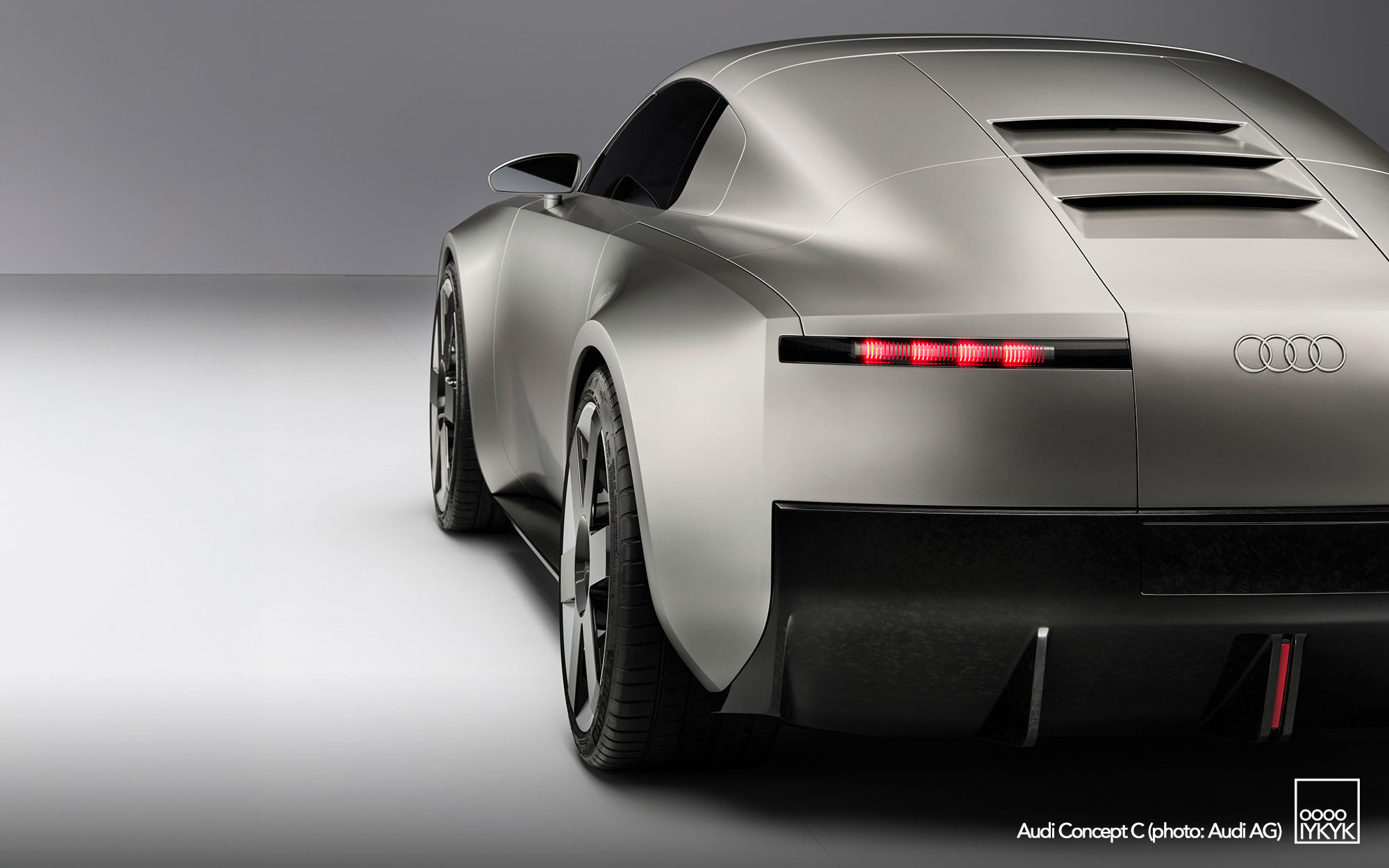
CONCEPT C AS TRAILBLAZER
Taken in context, the Concept C is more than just a sleek roadster—it’s a marker in Audi’s timeline. It distills what the company wants to project moving forward: clarity, technical rigor, intelligence, and emotional appeal. It’s both a tribute to Audi’s heritage and a statement of where the four rings intend to go.
The car will make its next major appearance at the IAA in Munich, previewing a future production model and shaping others to follow. For Audi, this is less about one car and more about a new ethos—a way of designing, building, and positioning itself in an increasingly competitive industry. As Döllner said, “Now is the time to look to the future and pick up speed.”
PHOTO GALLERY
